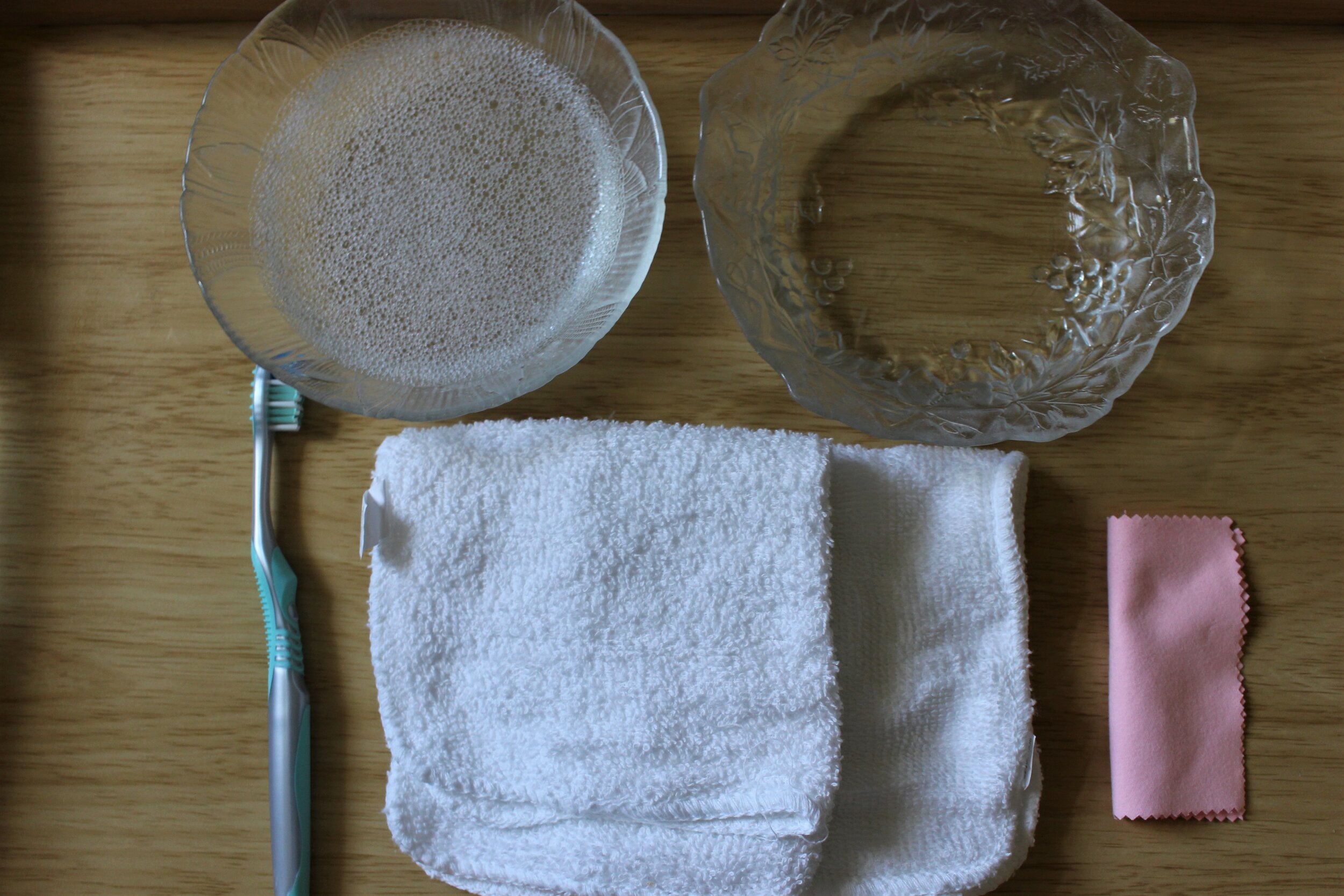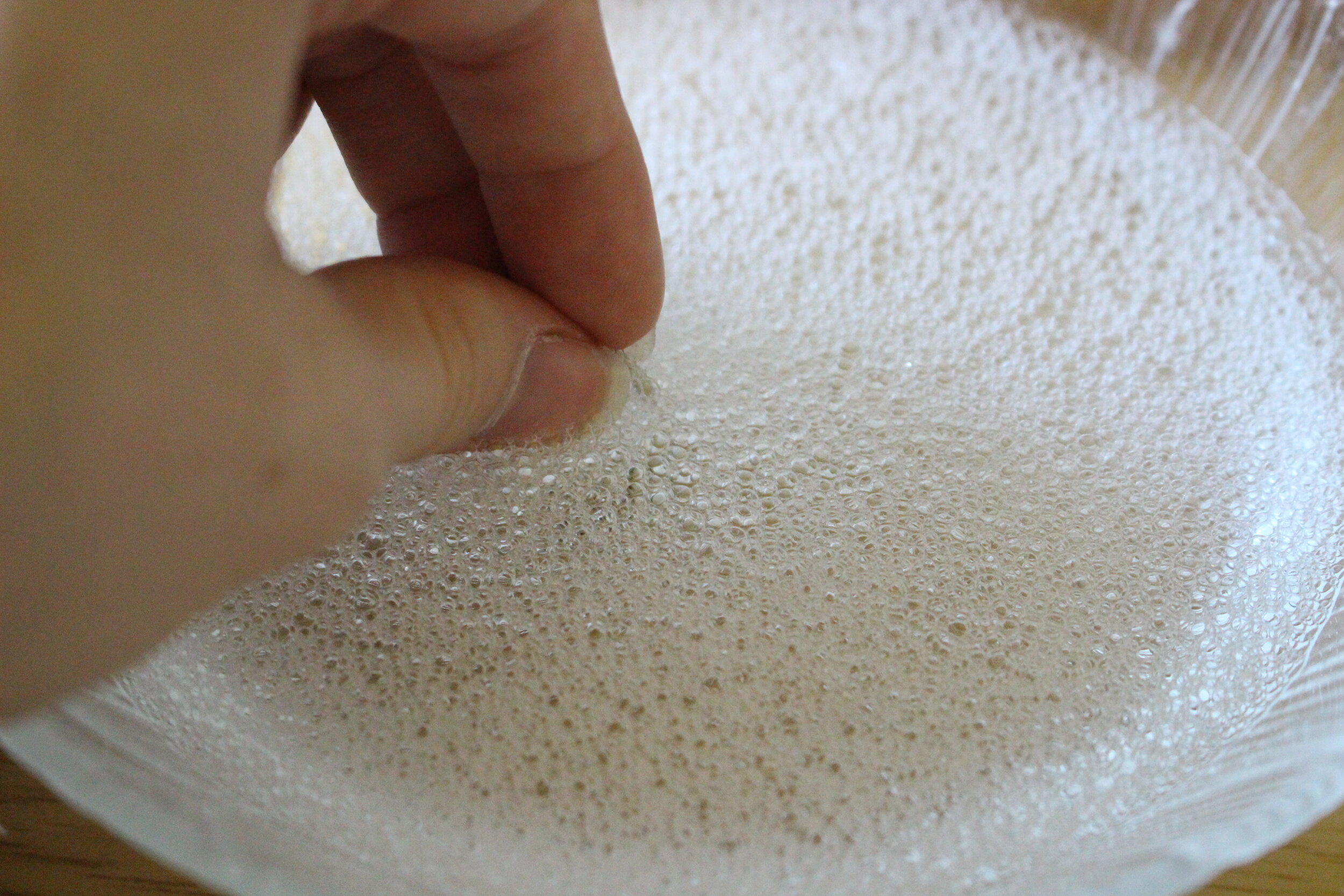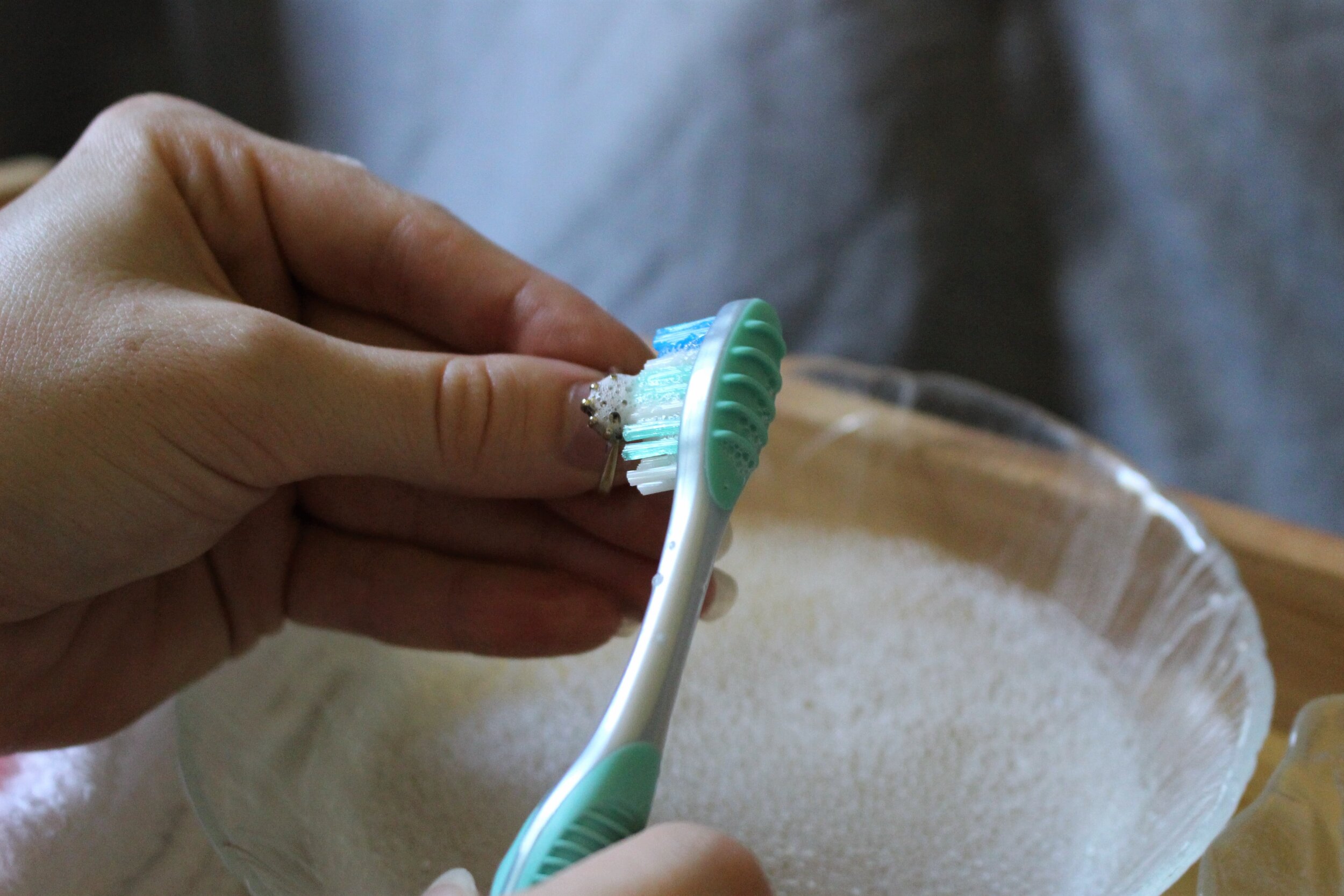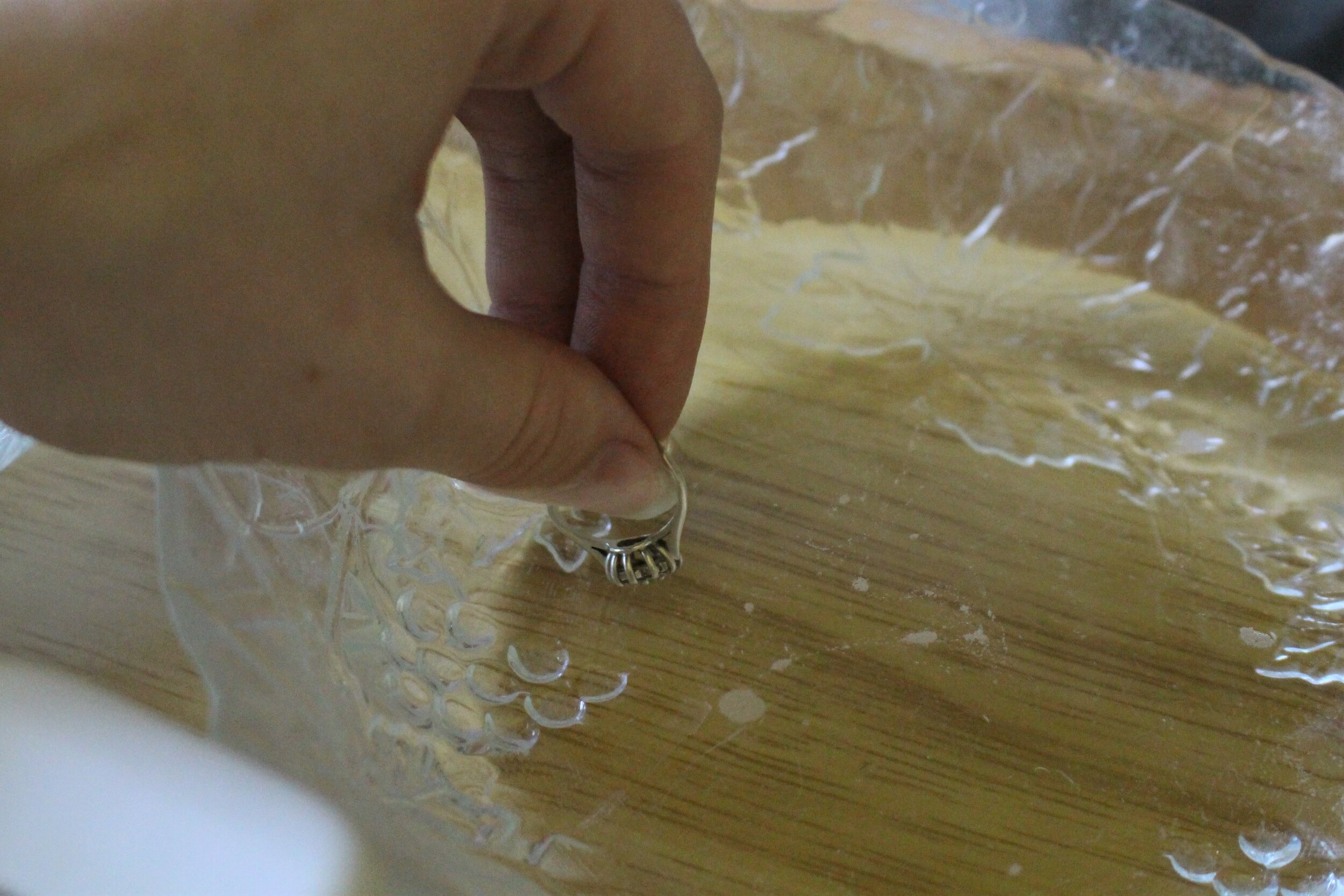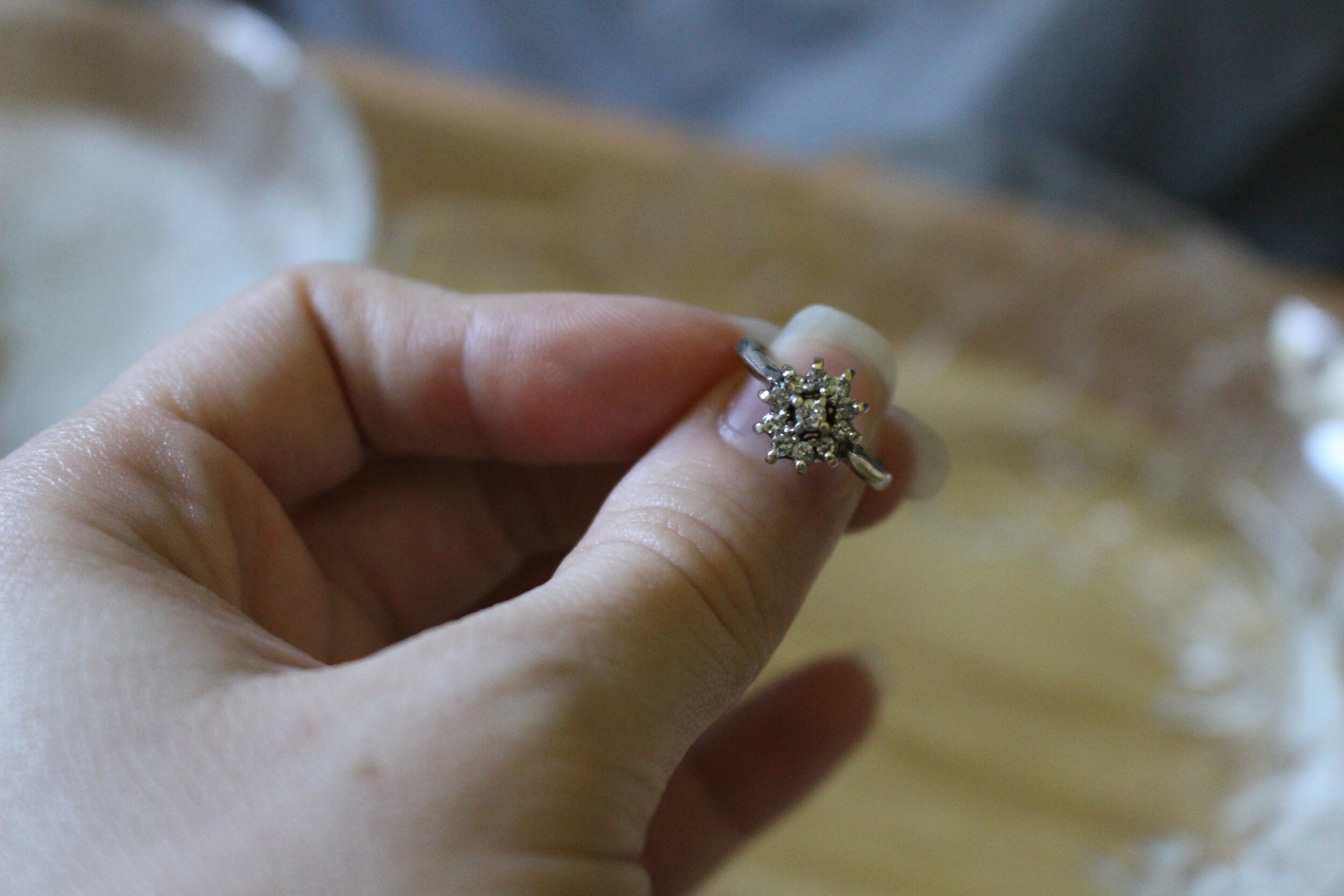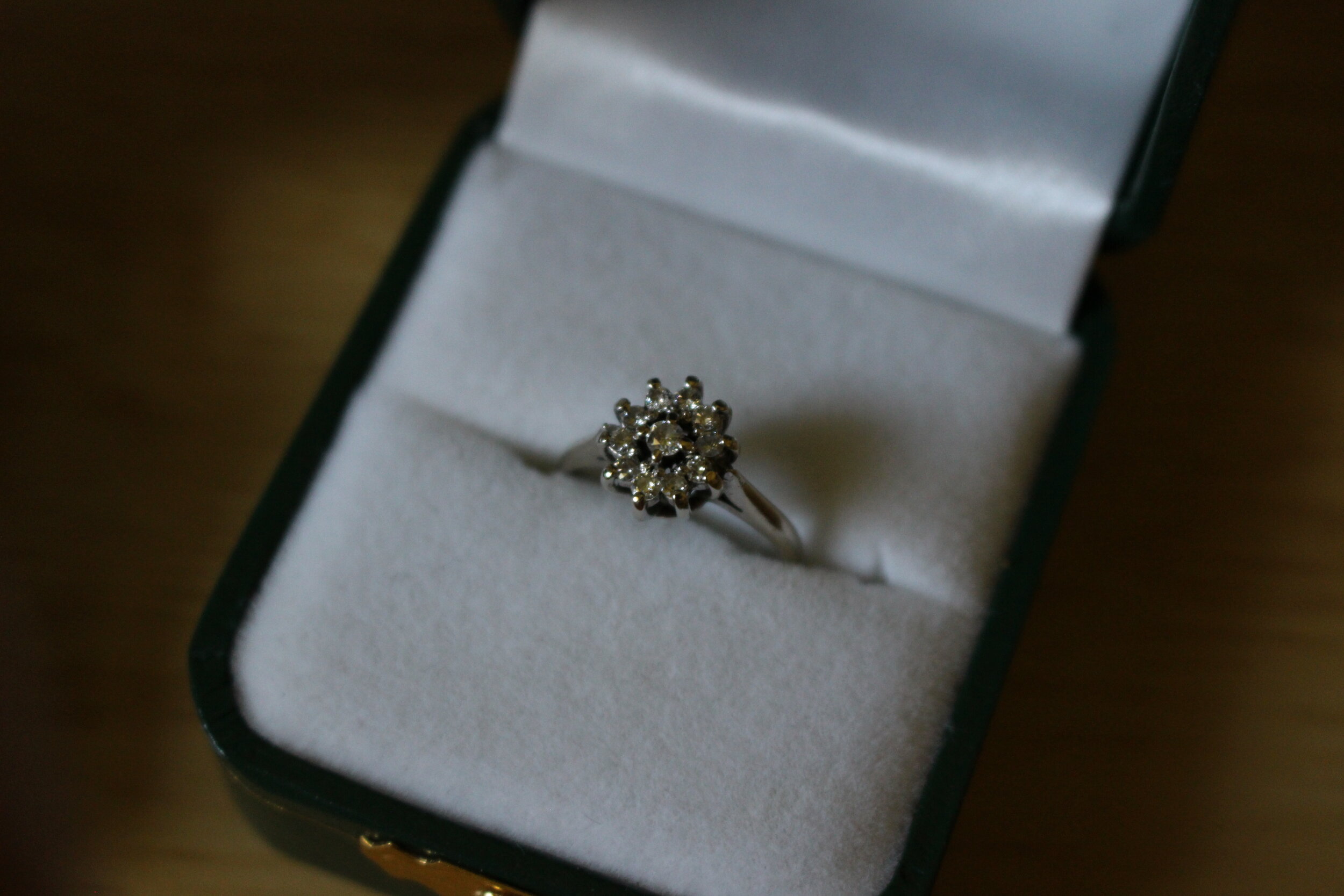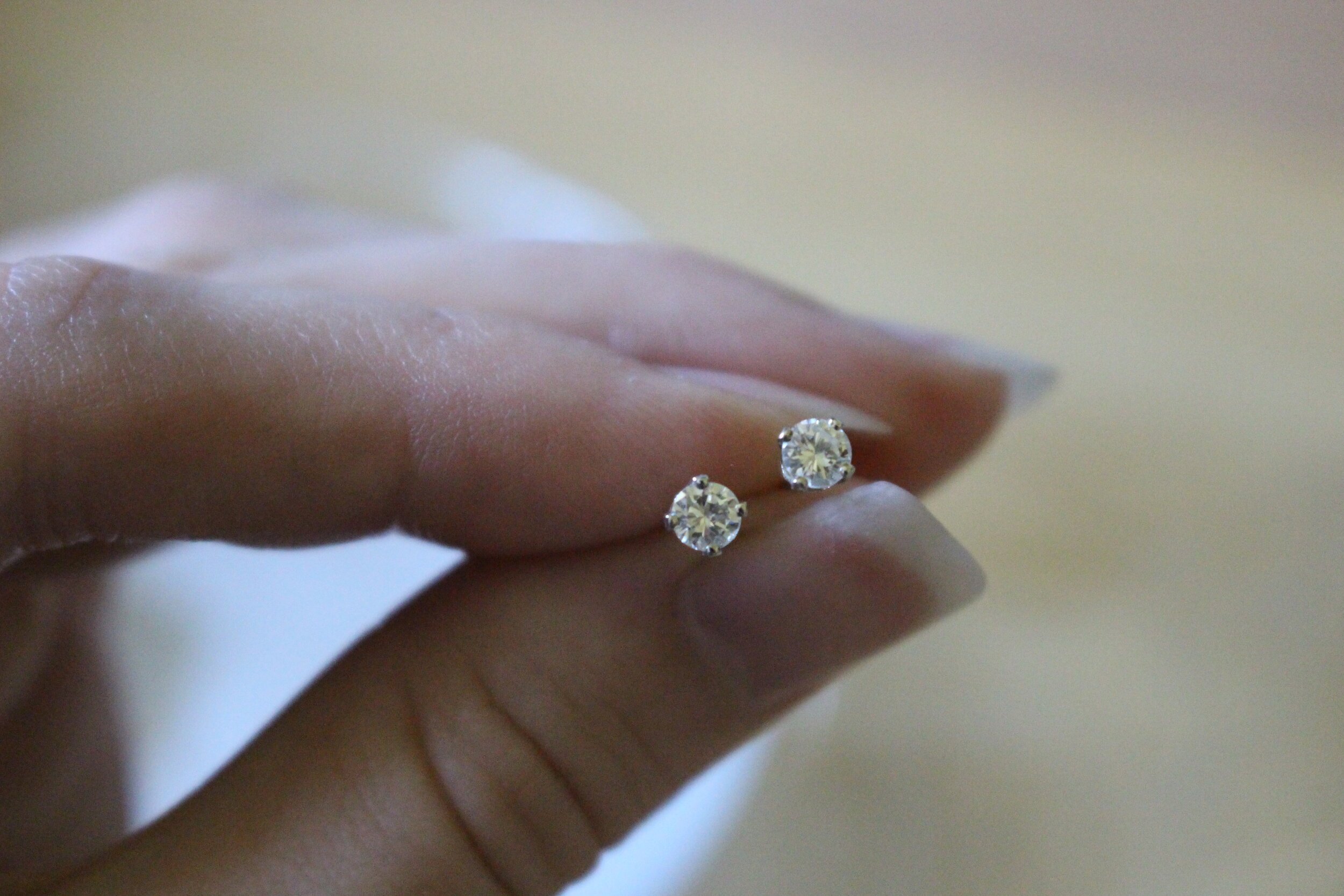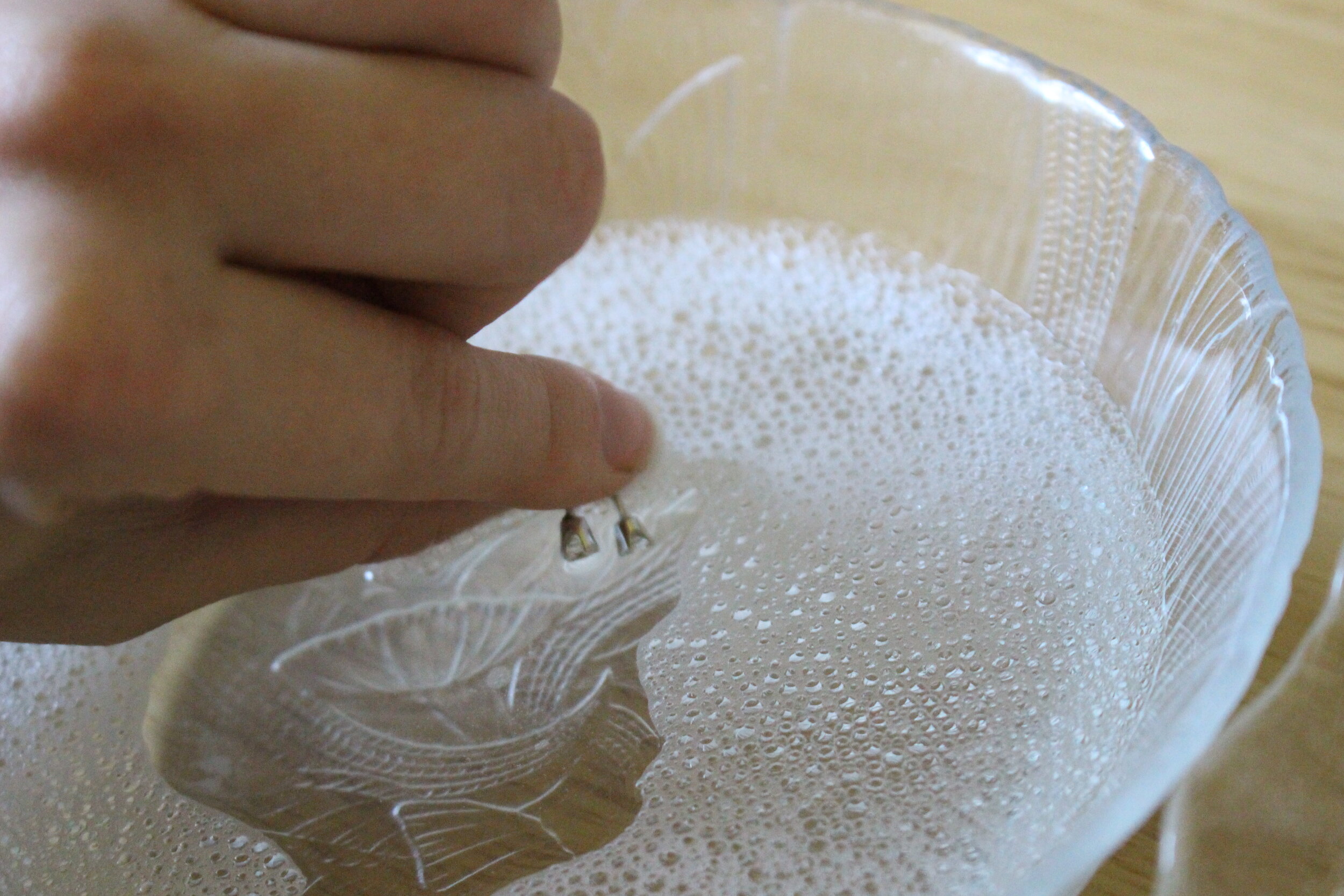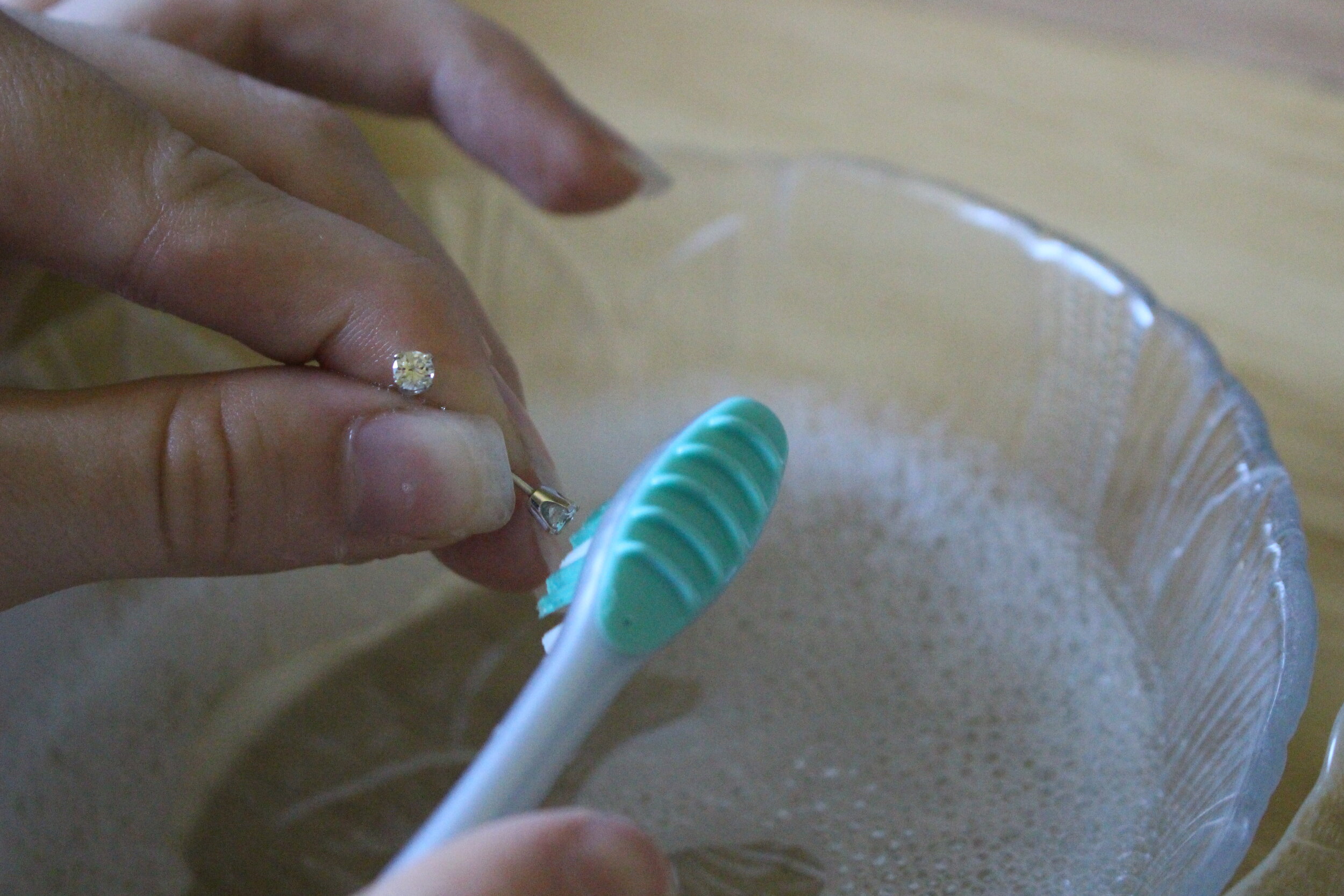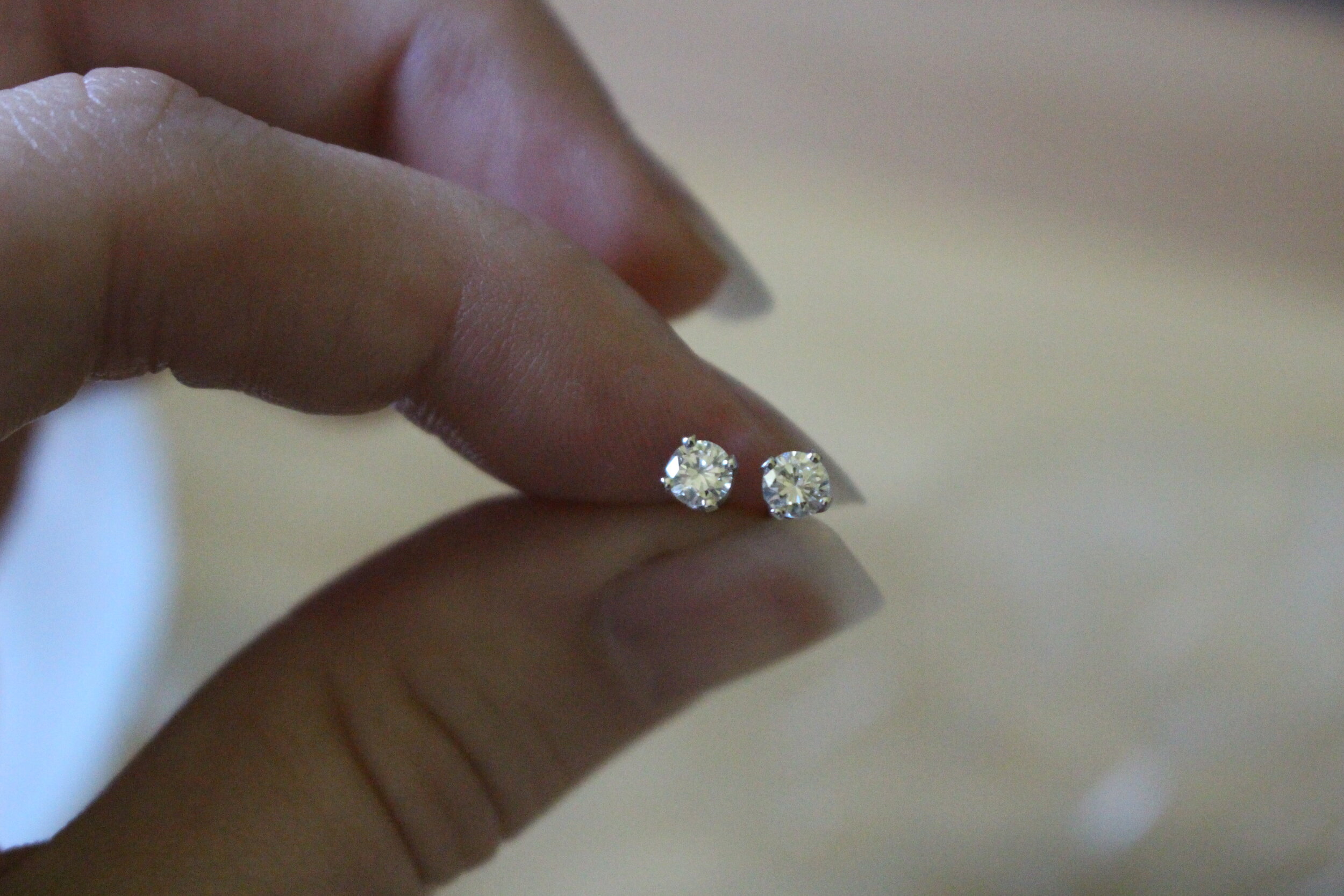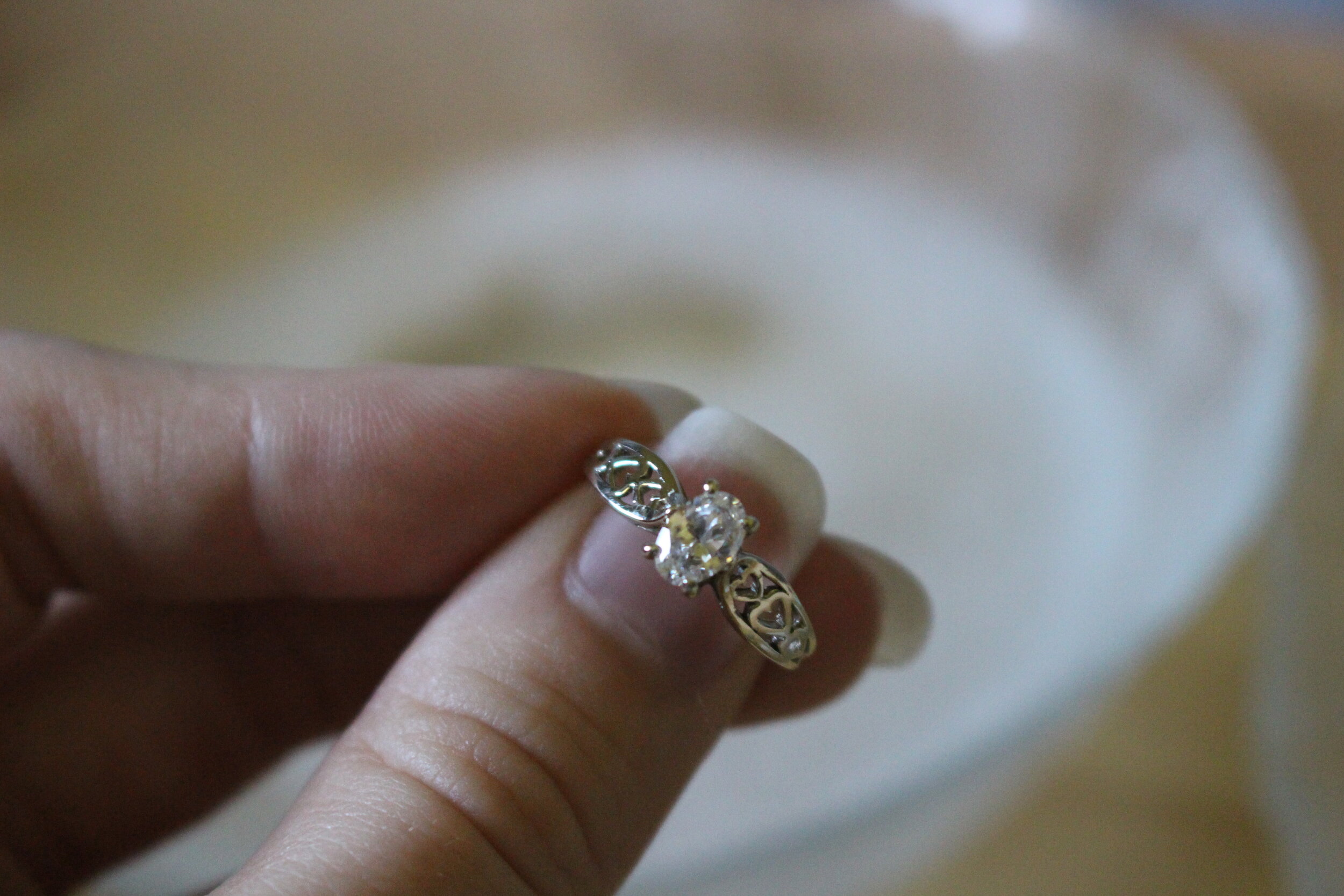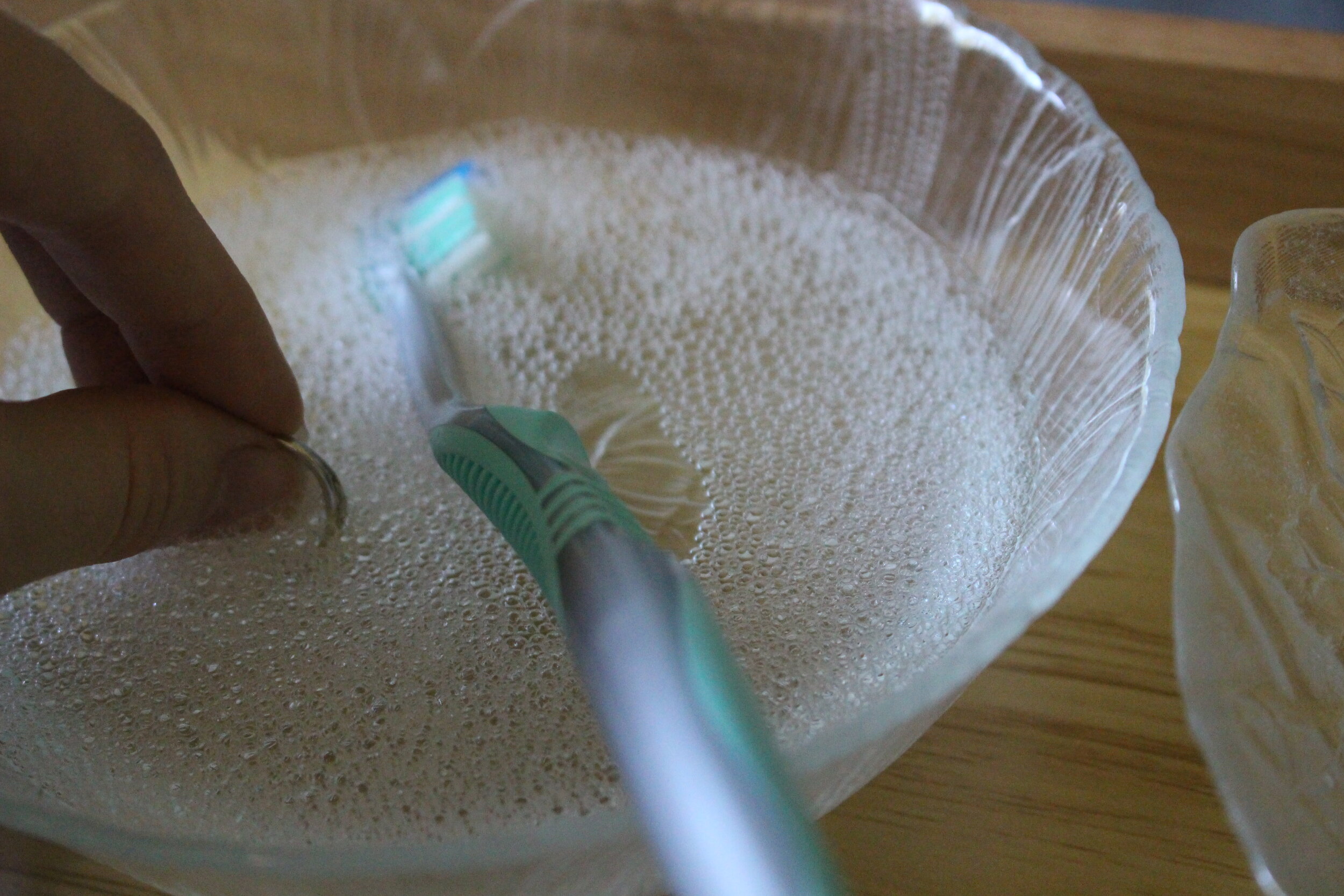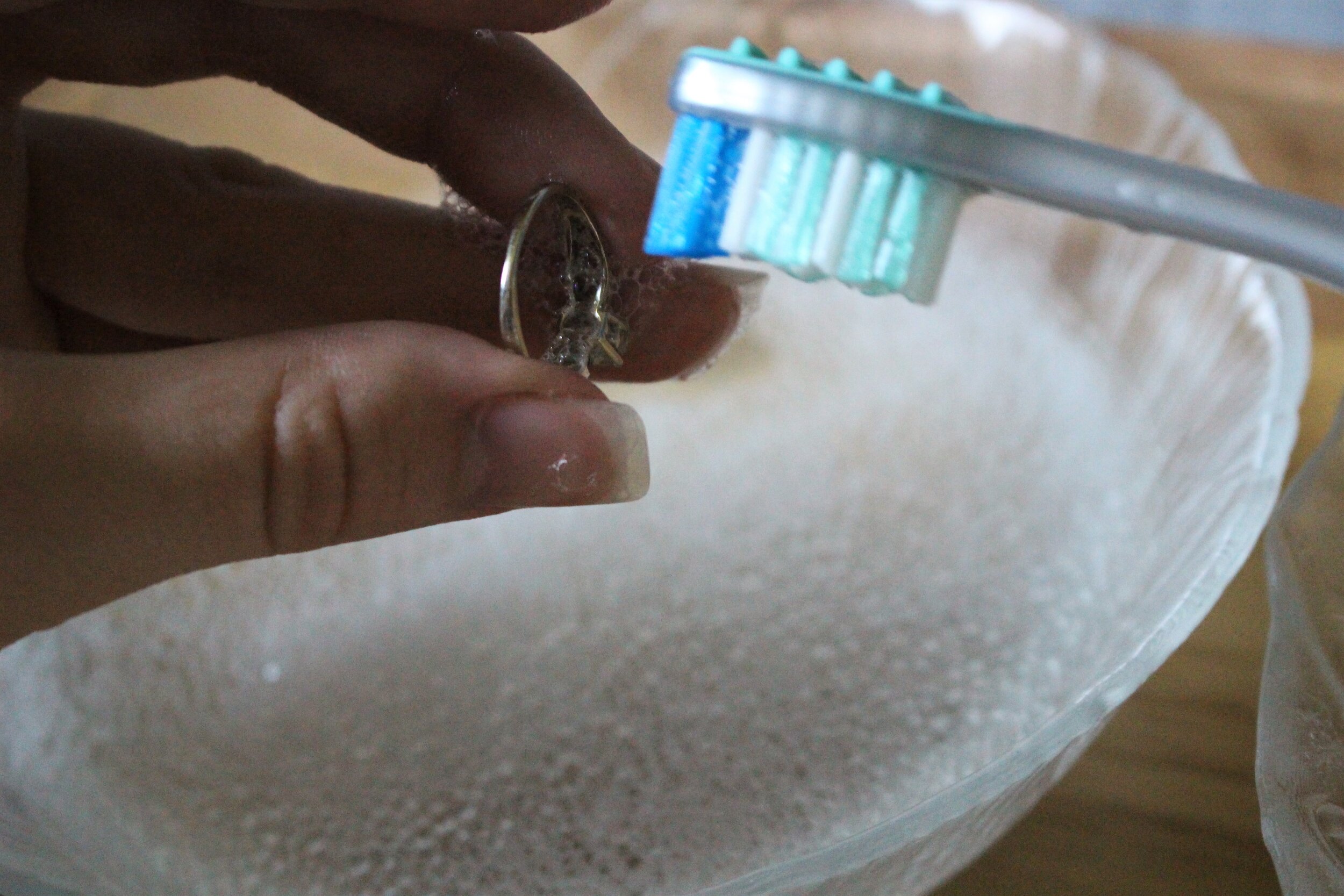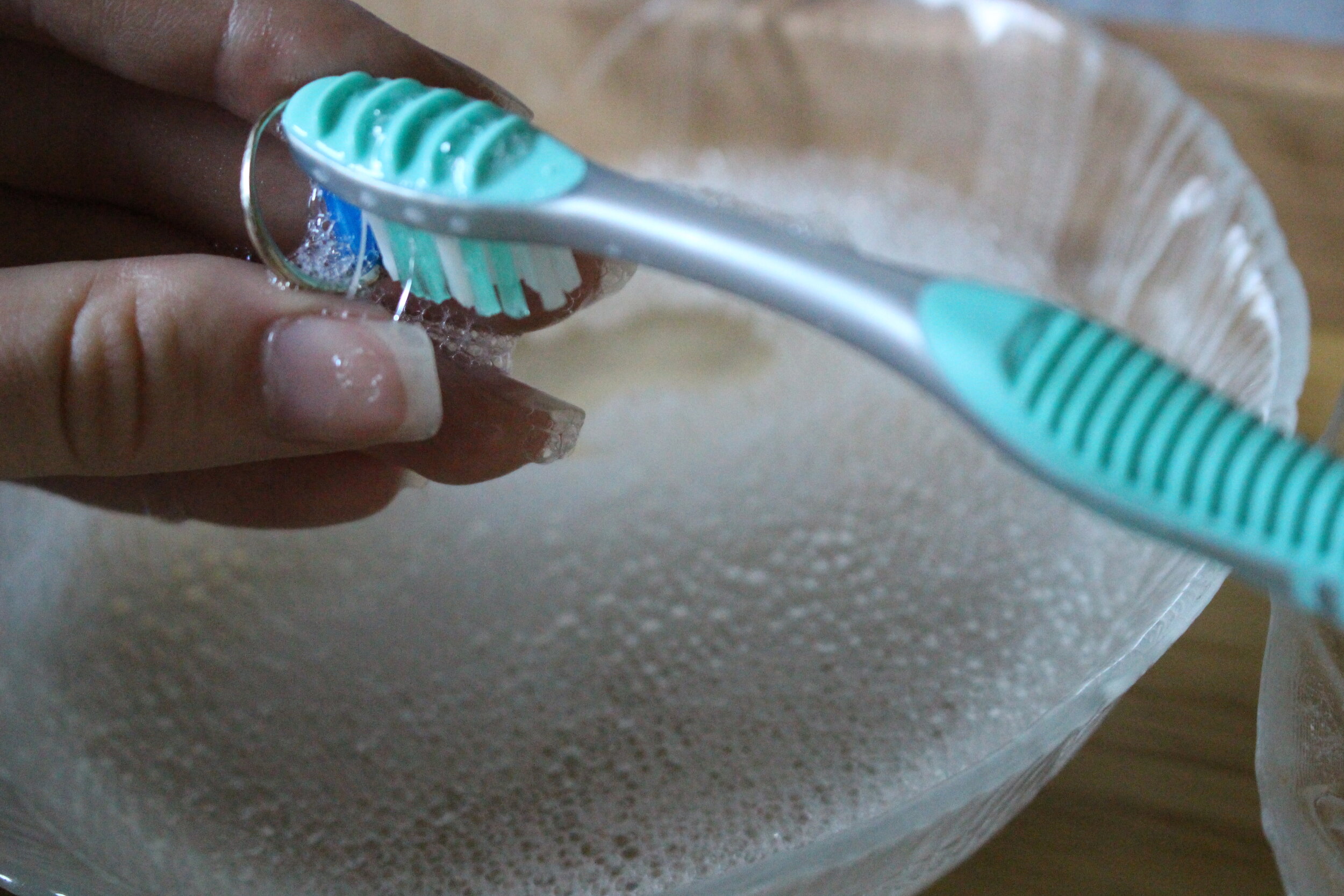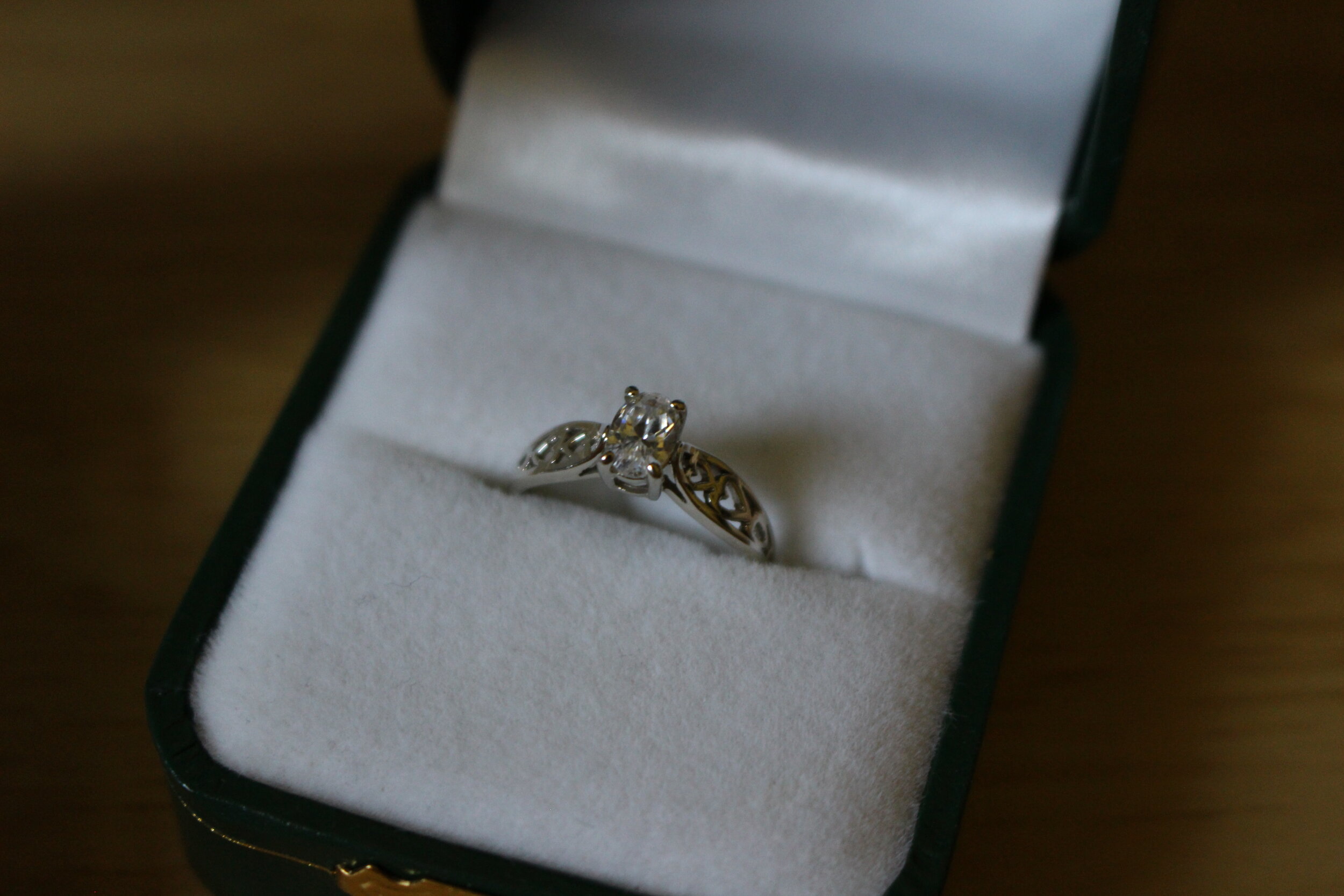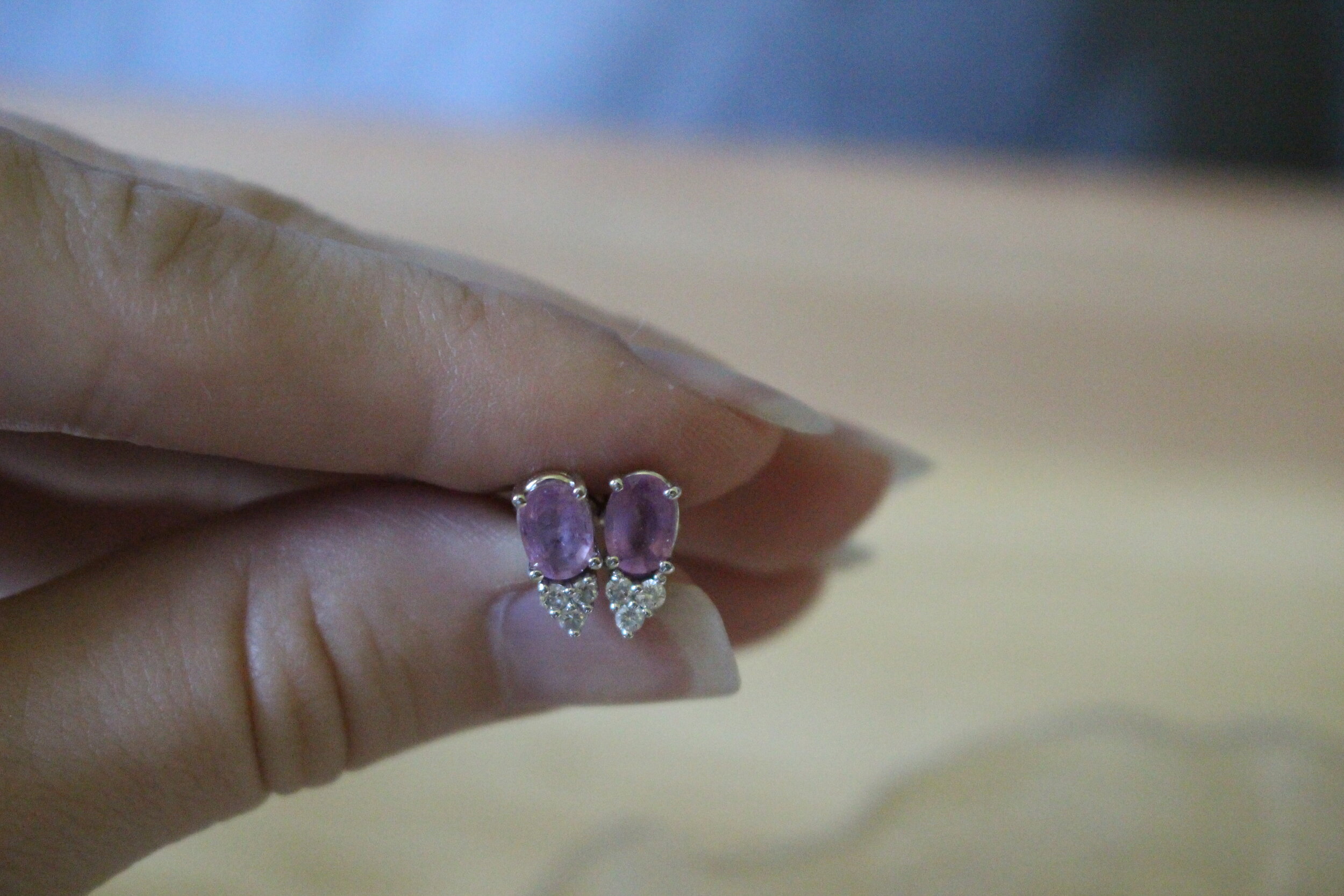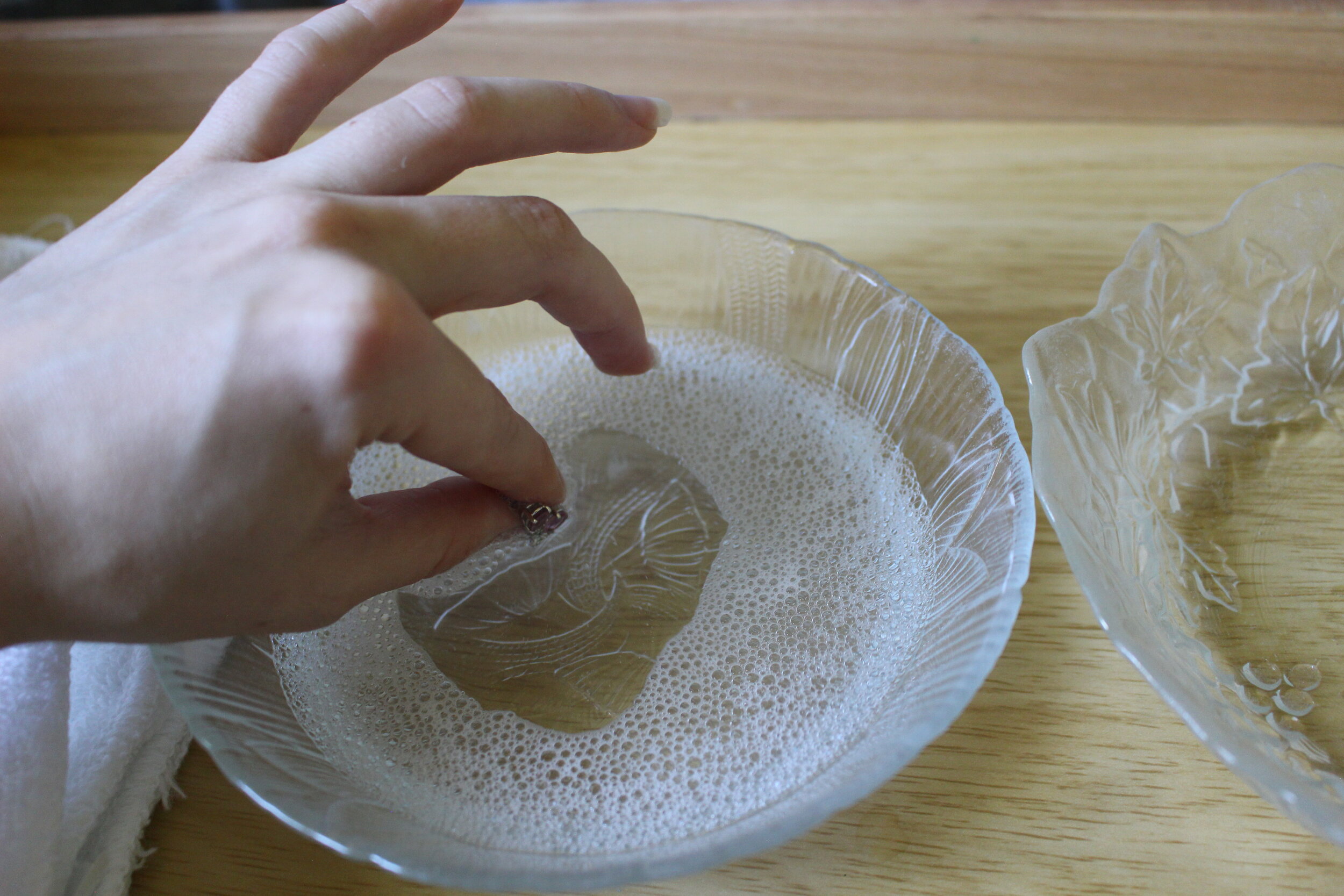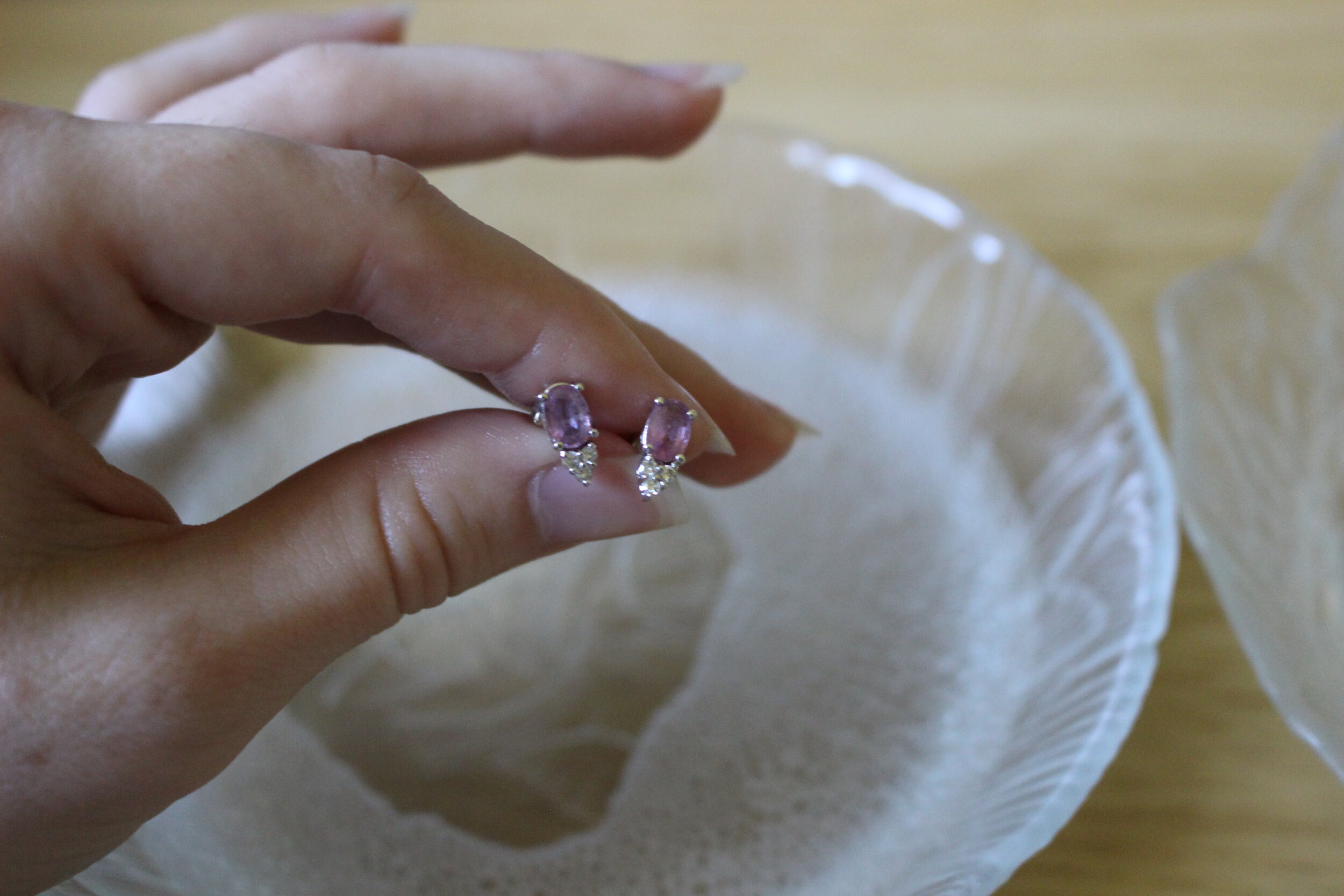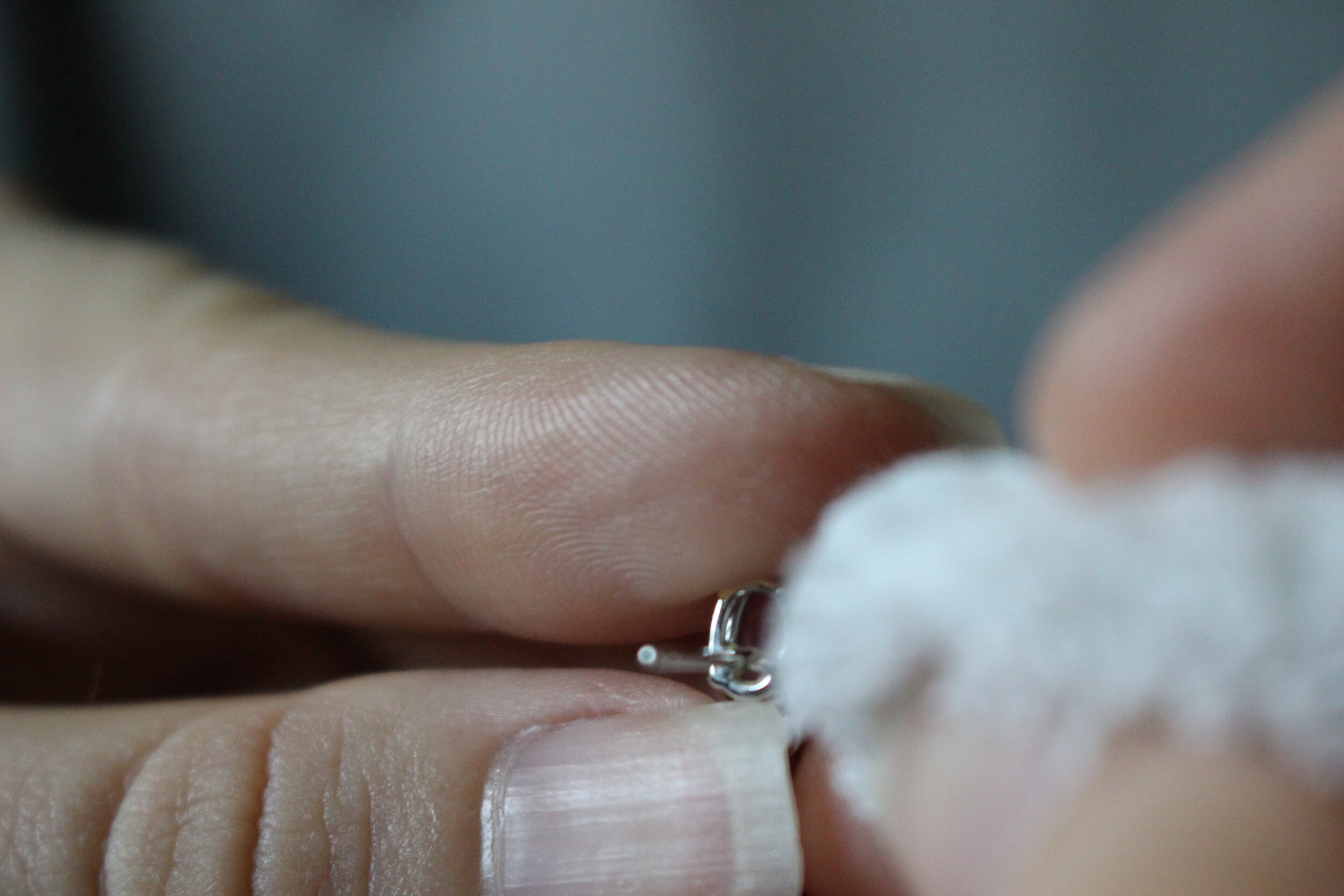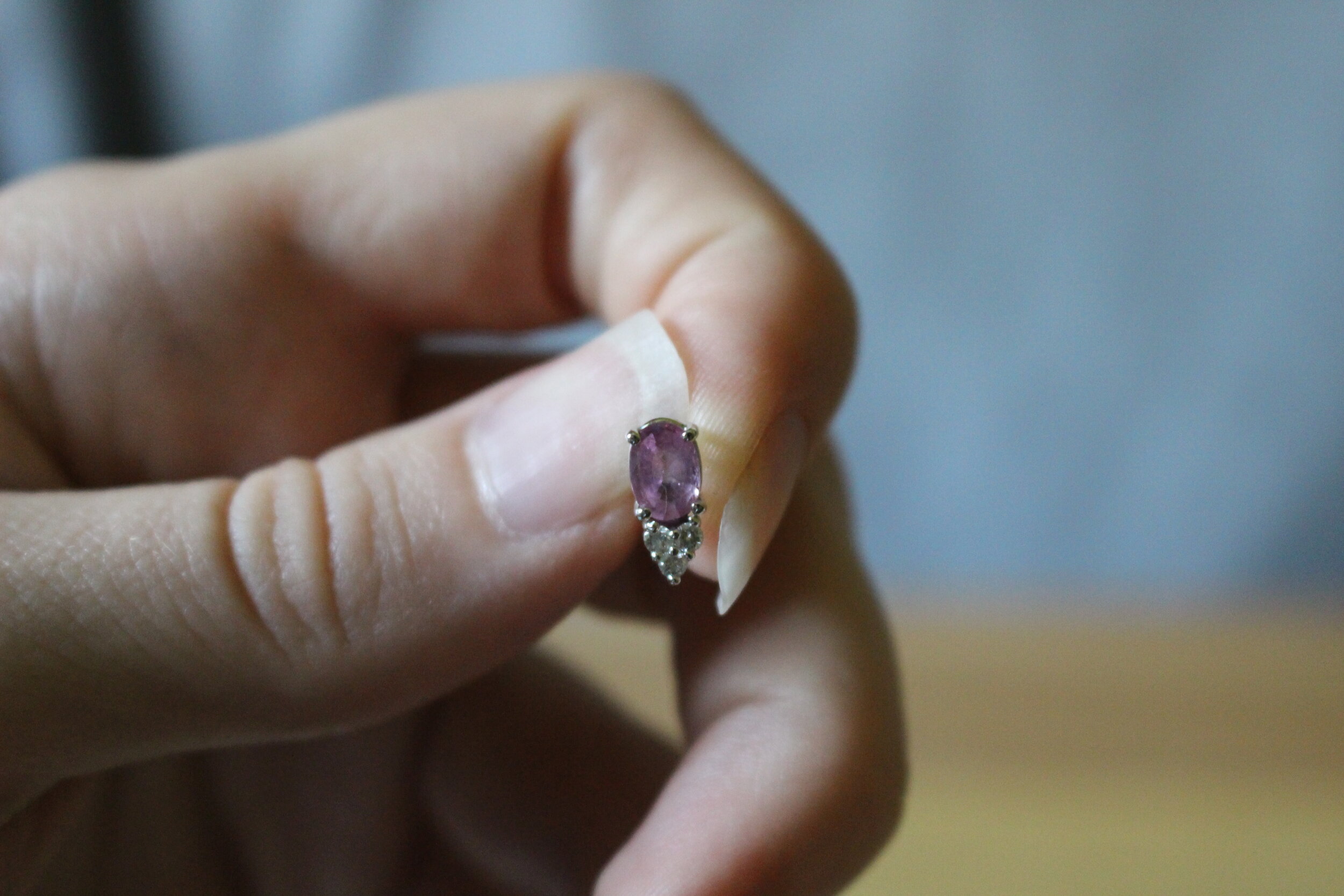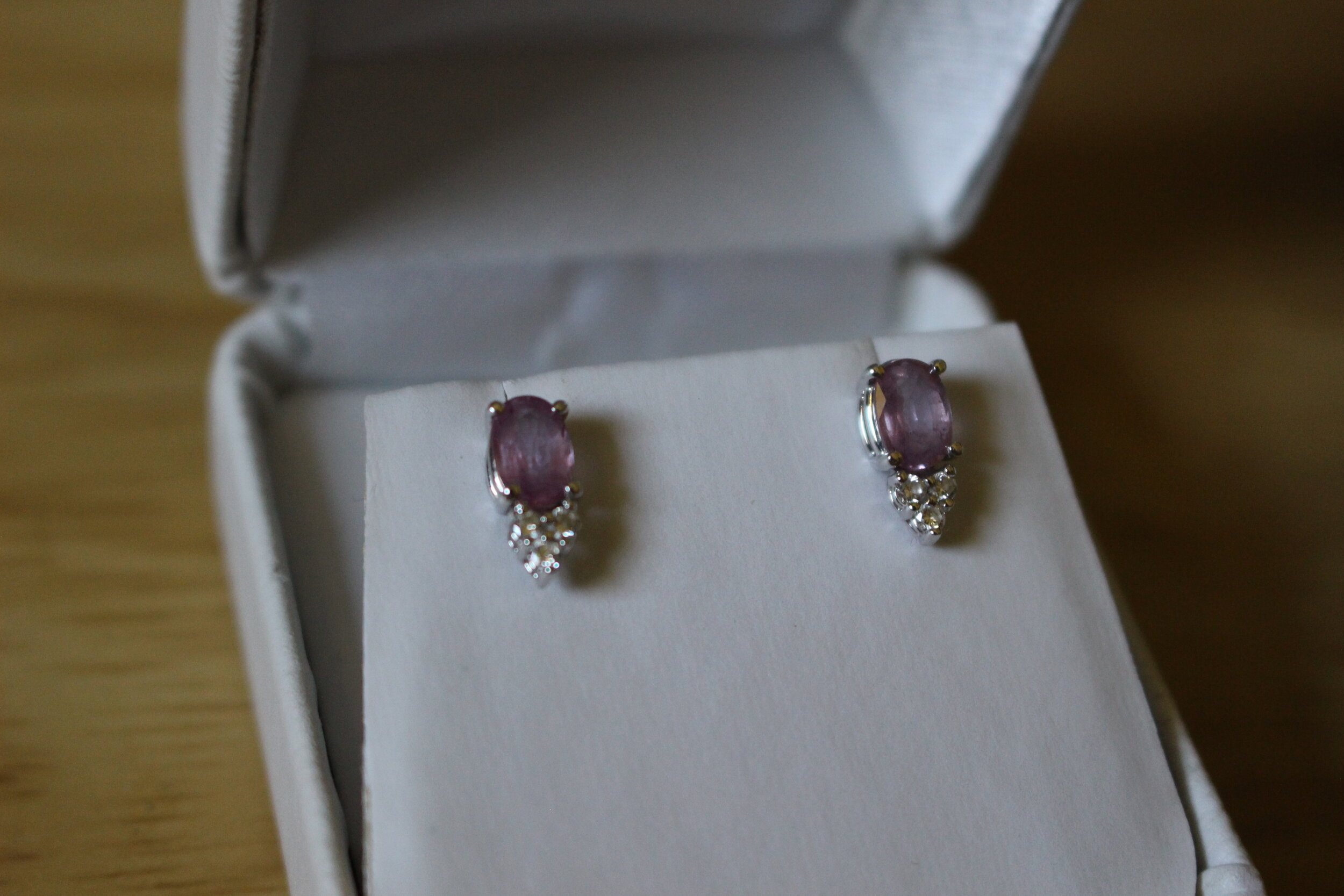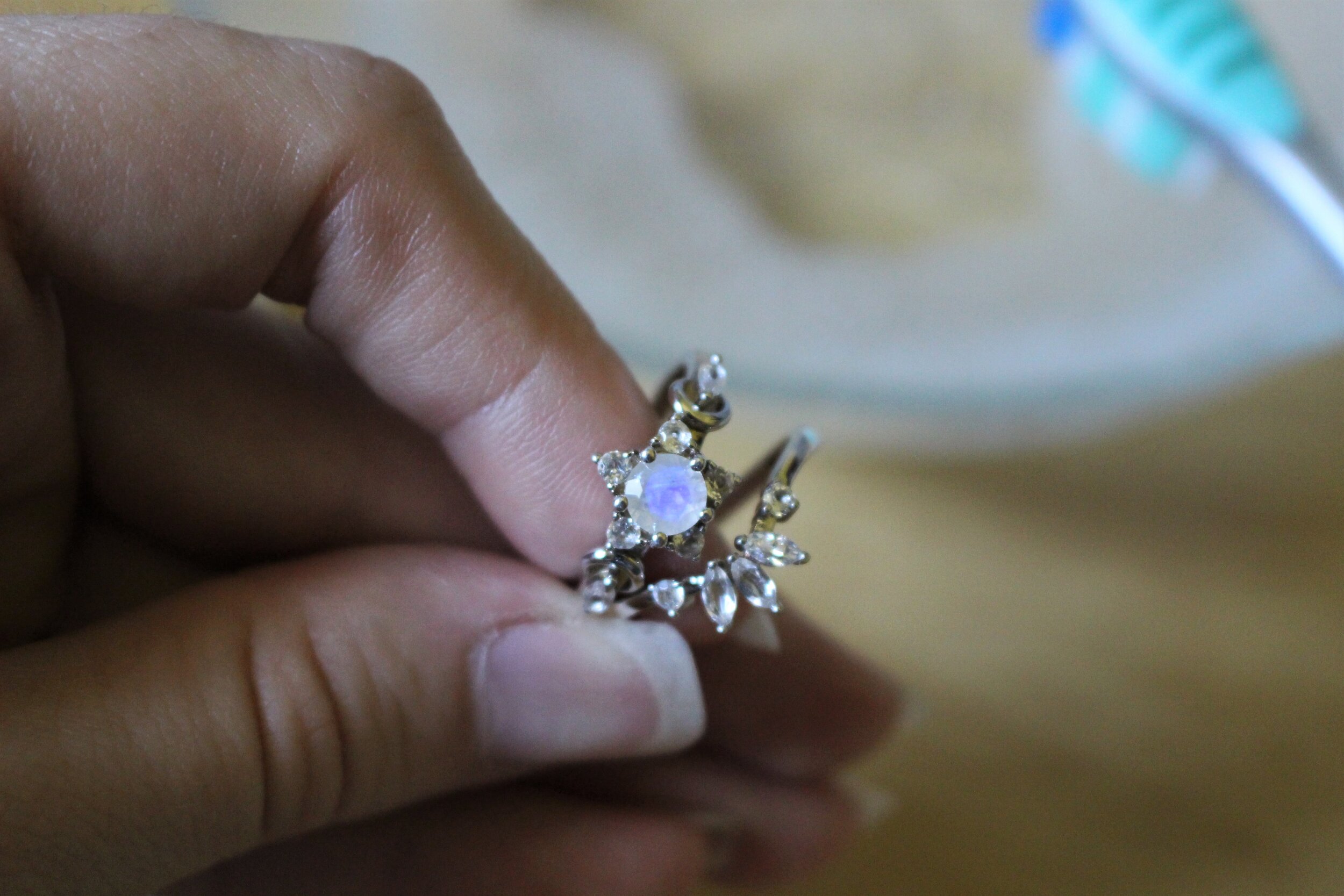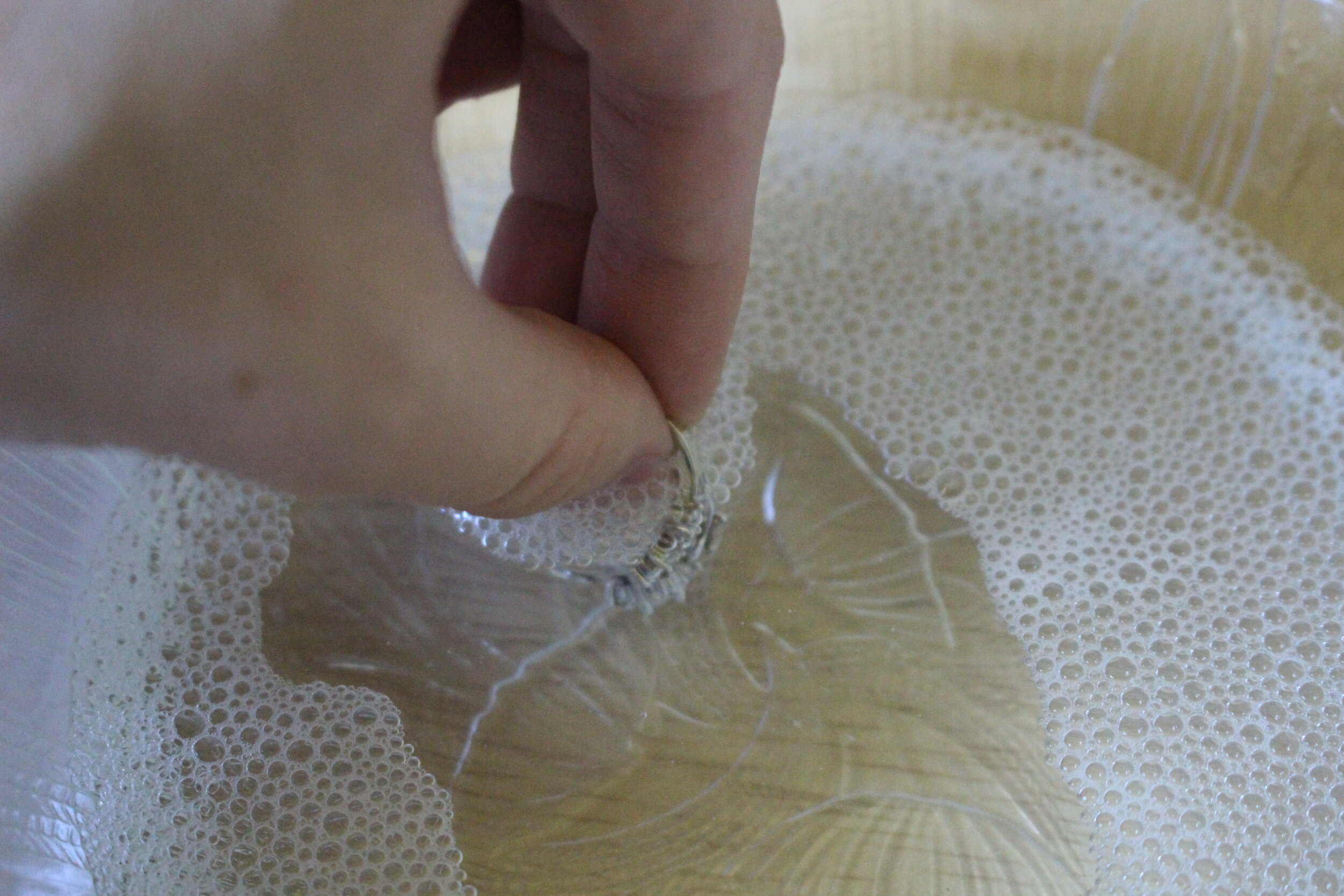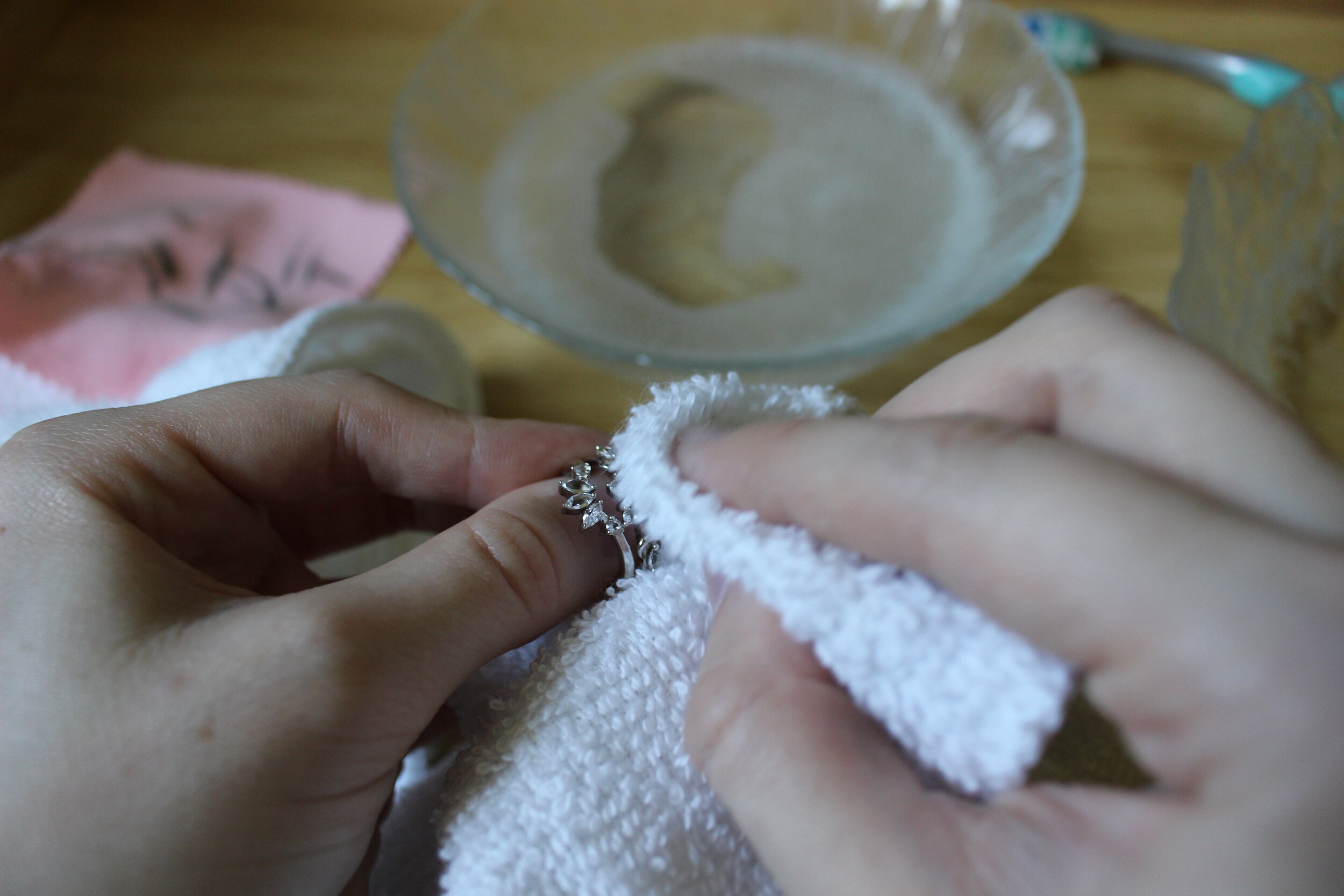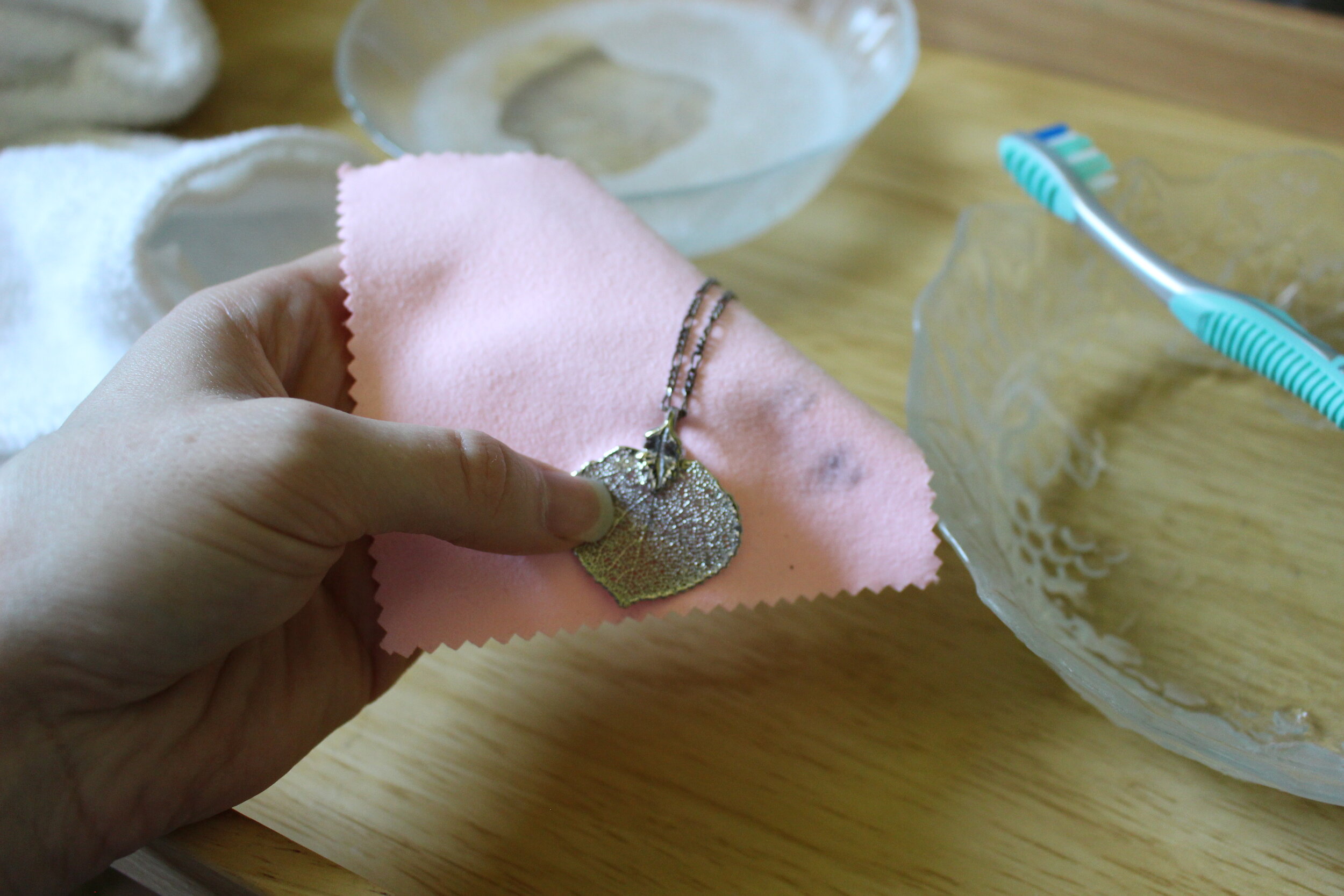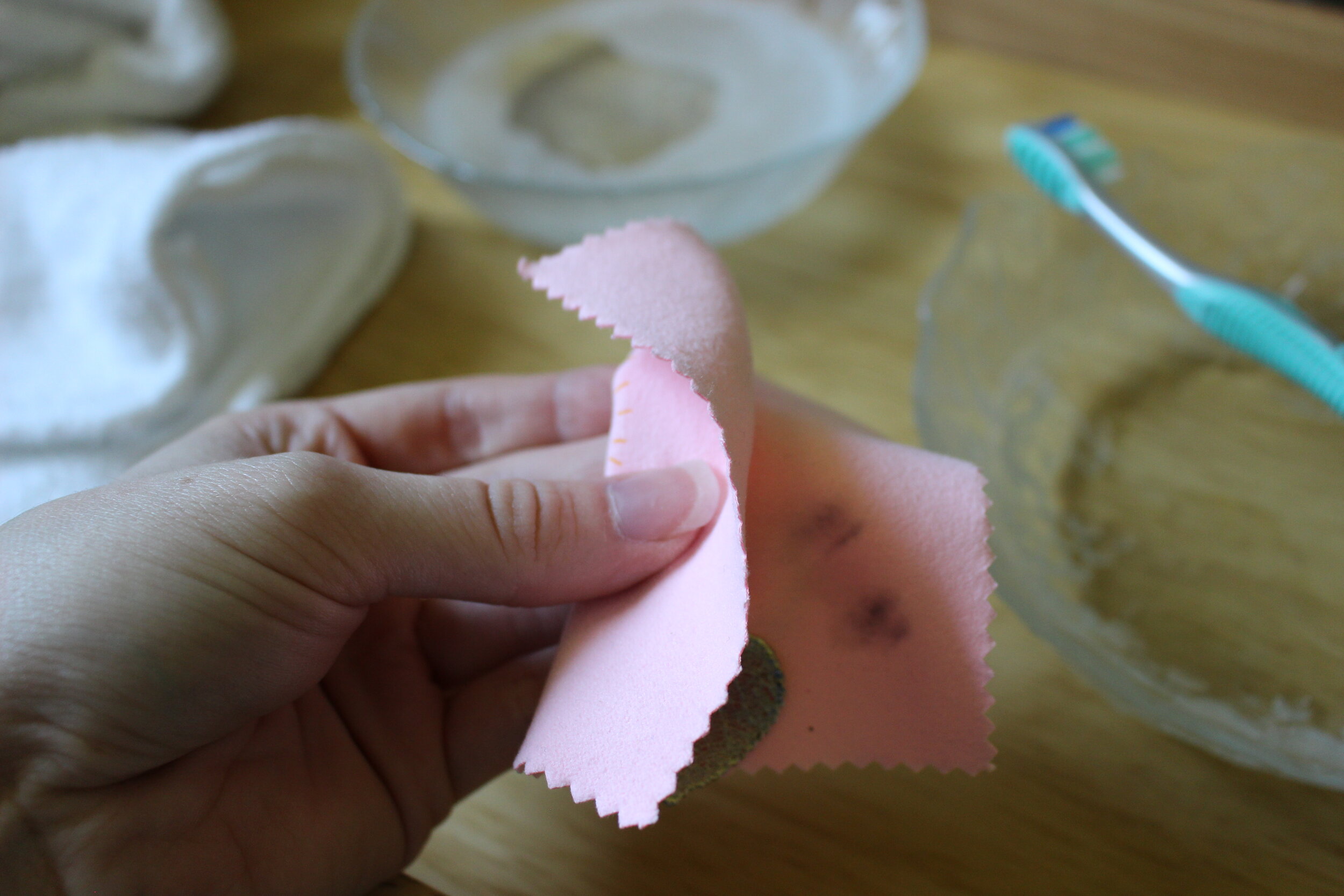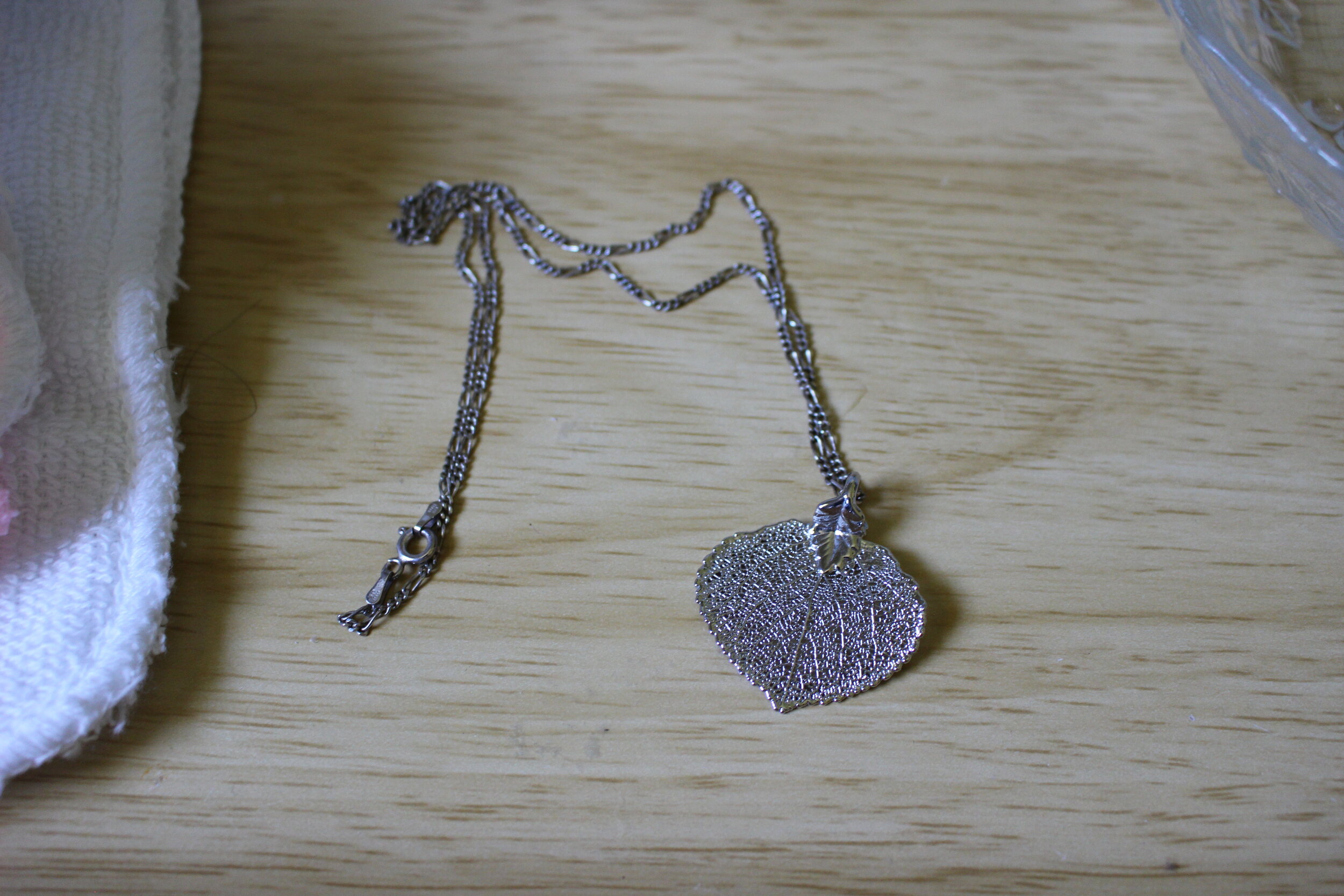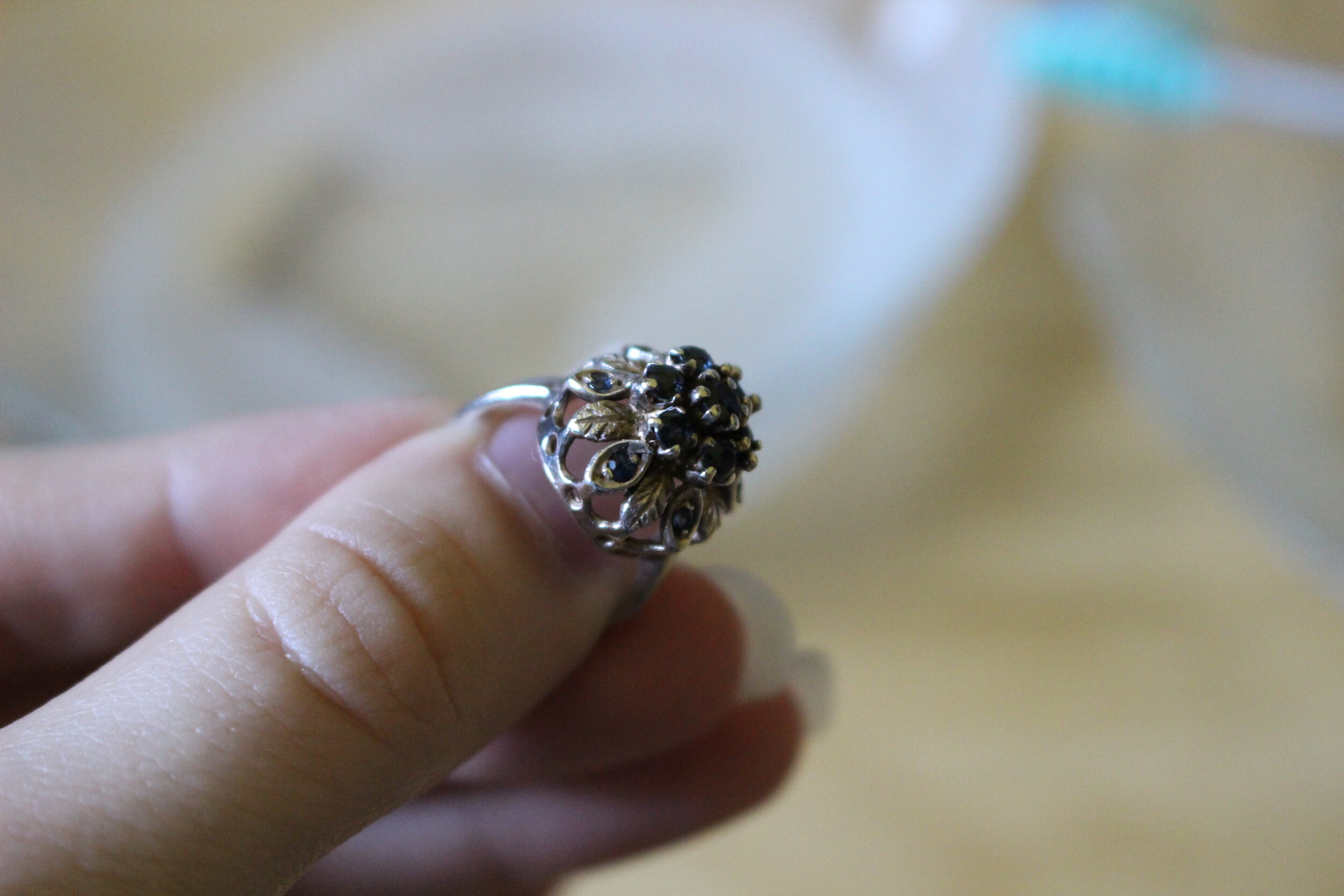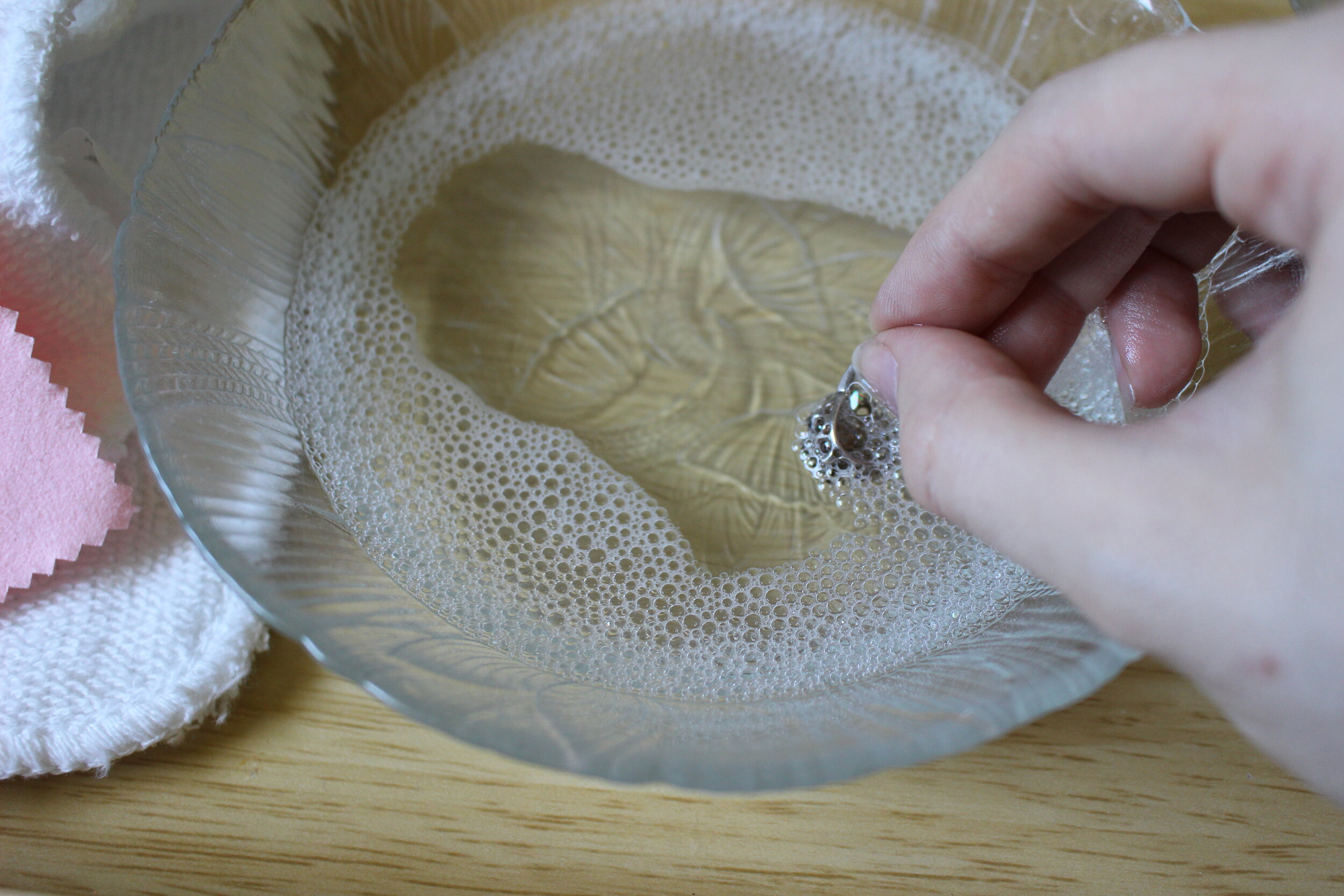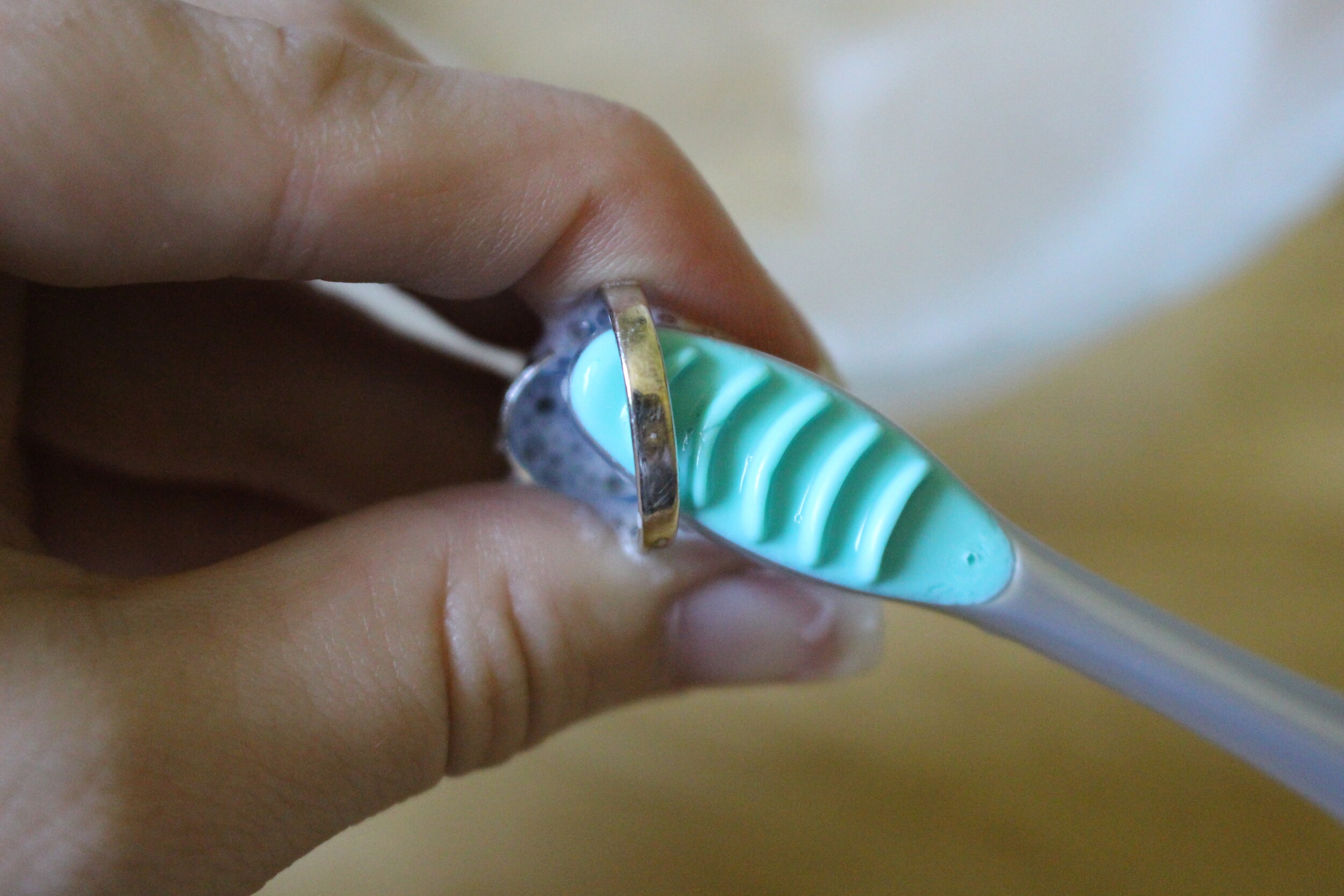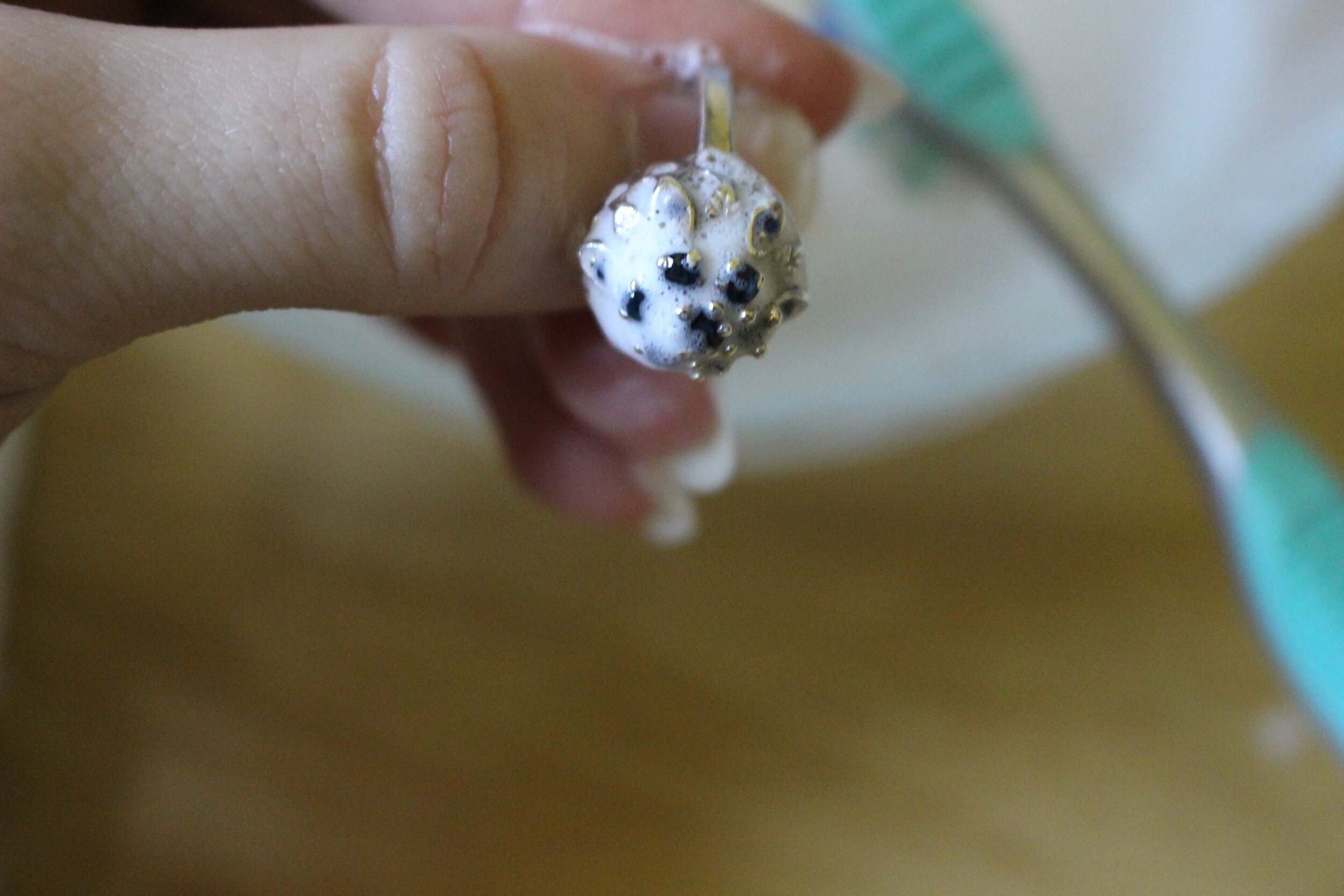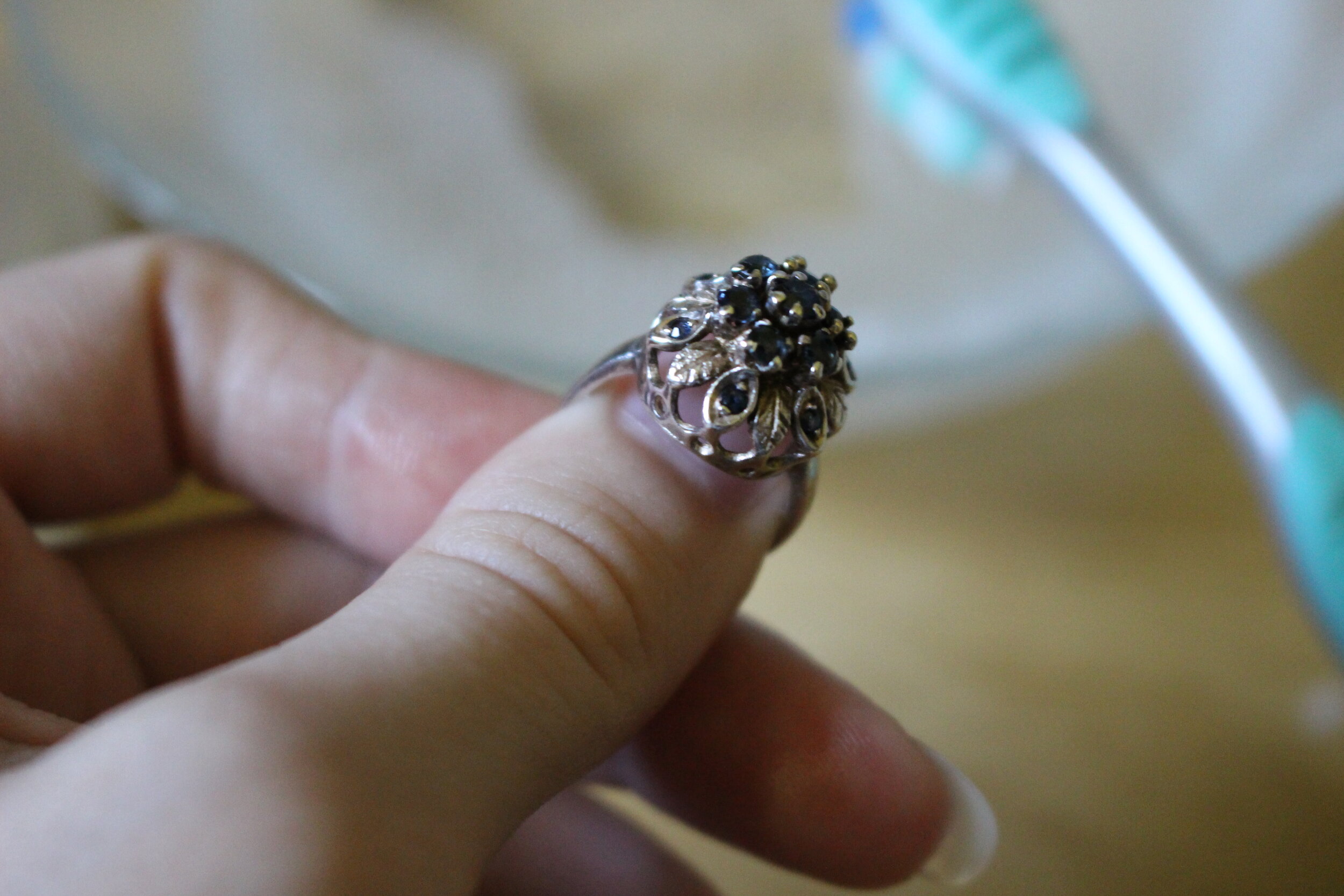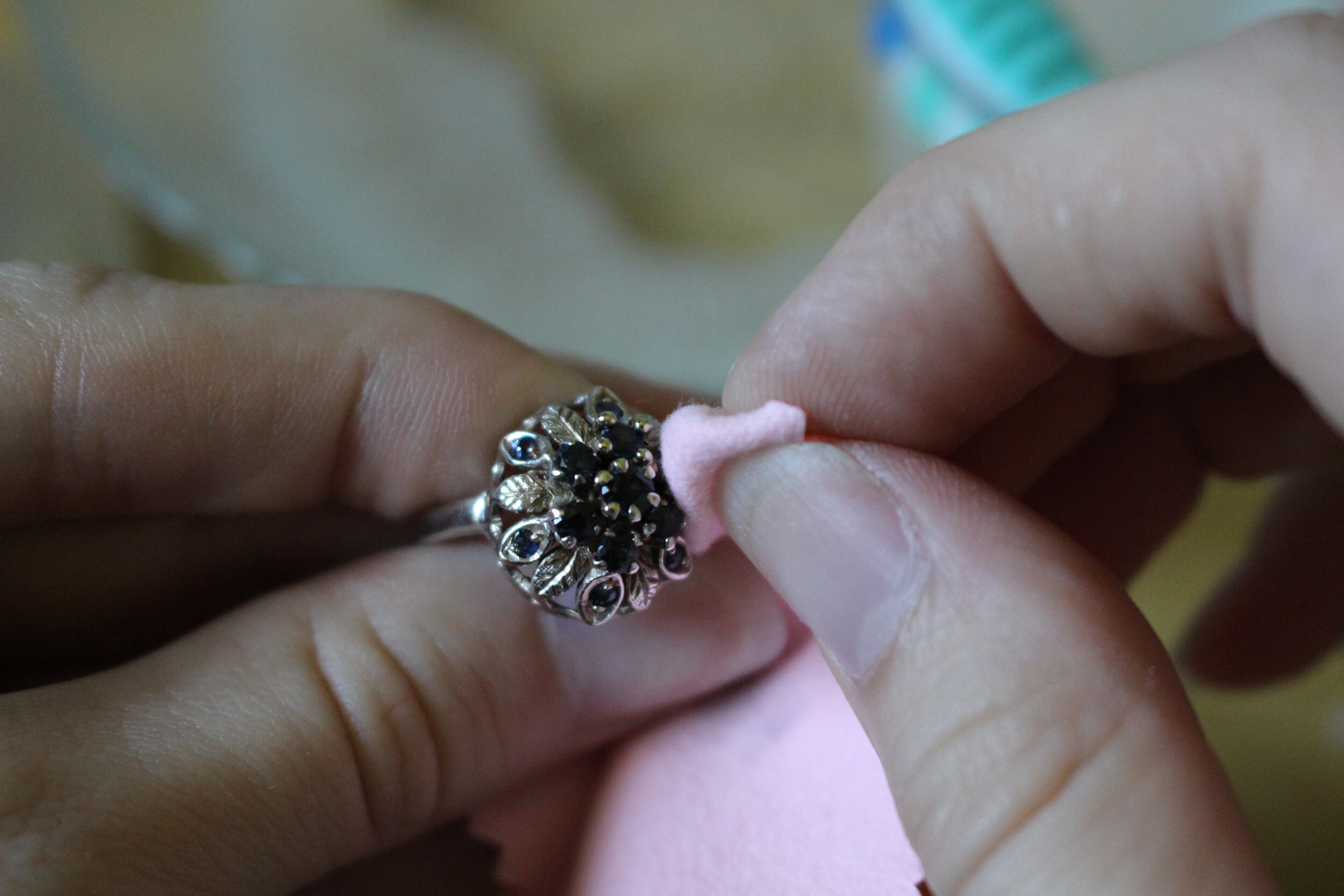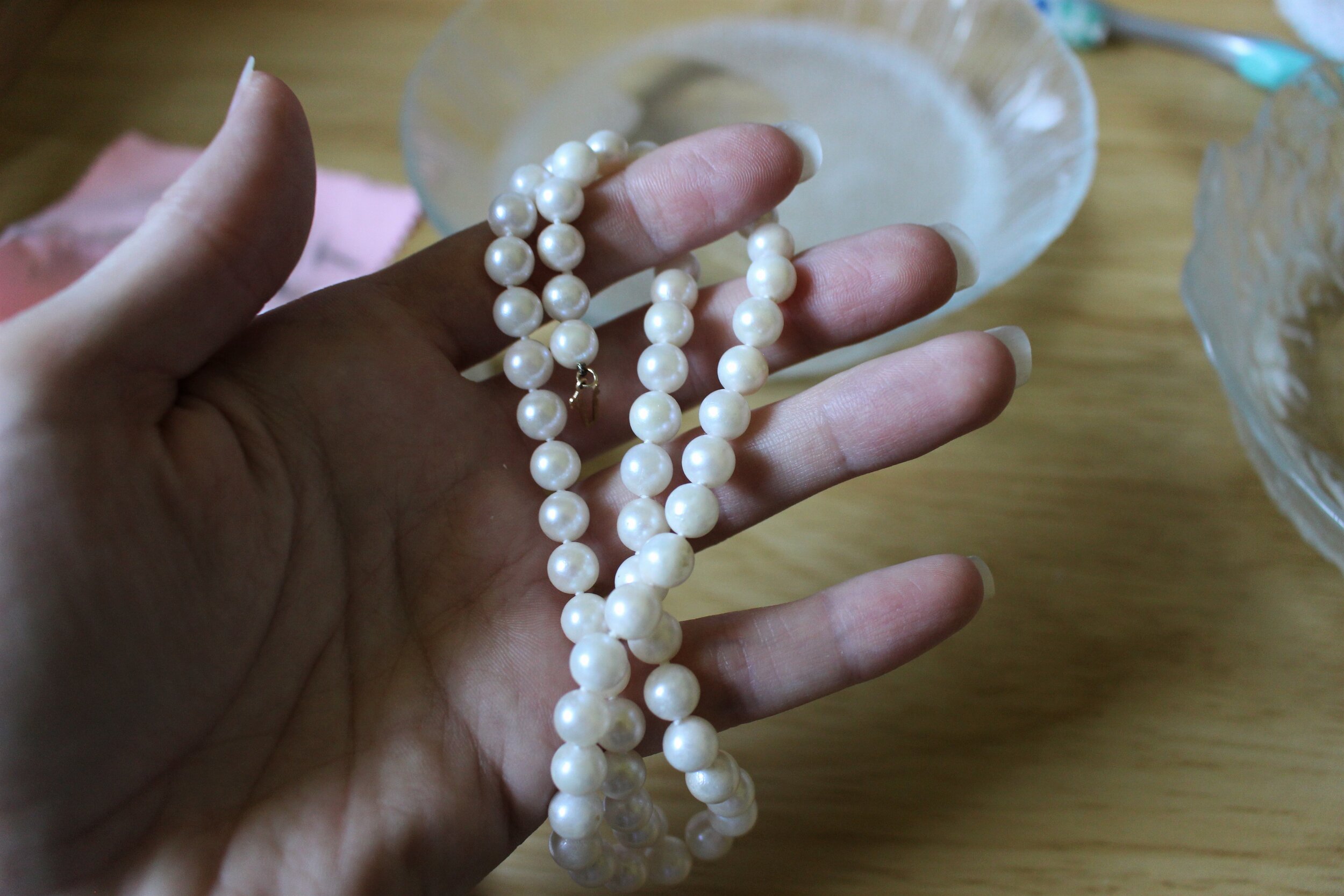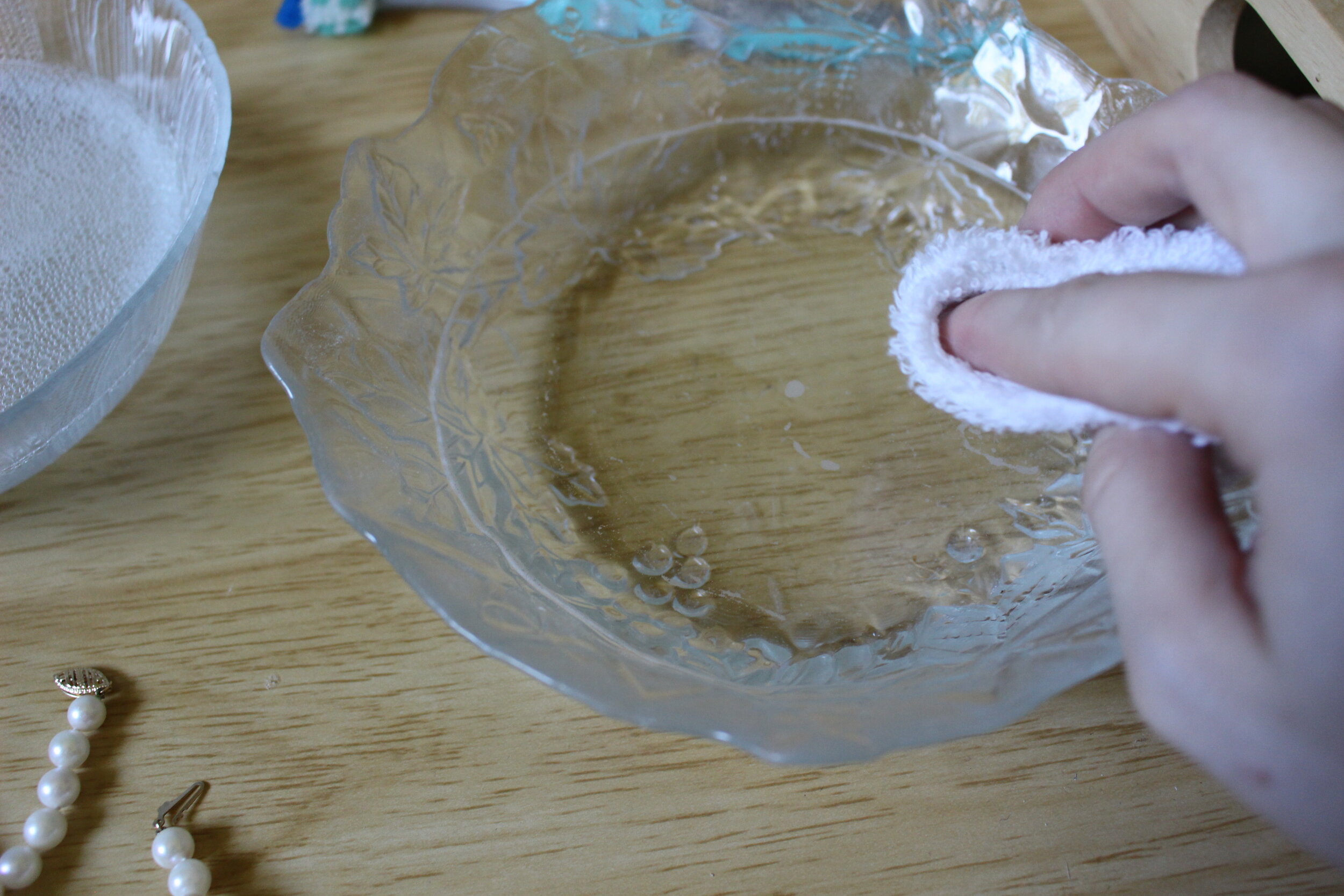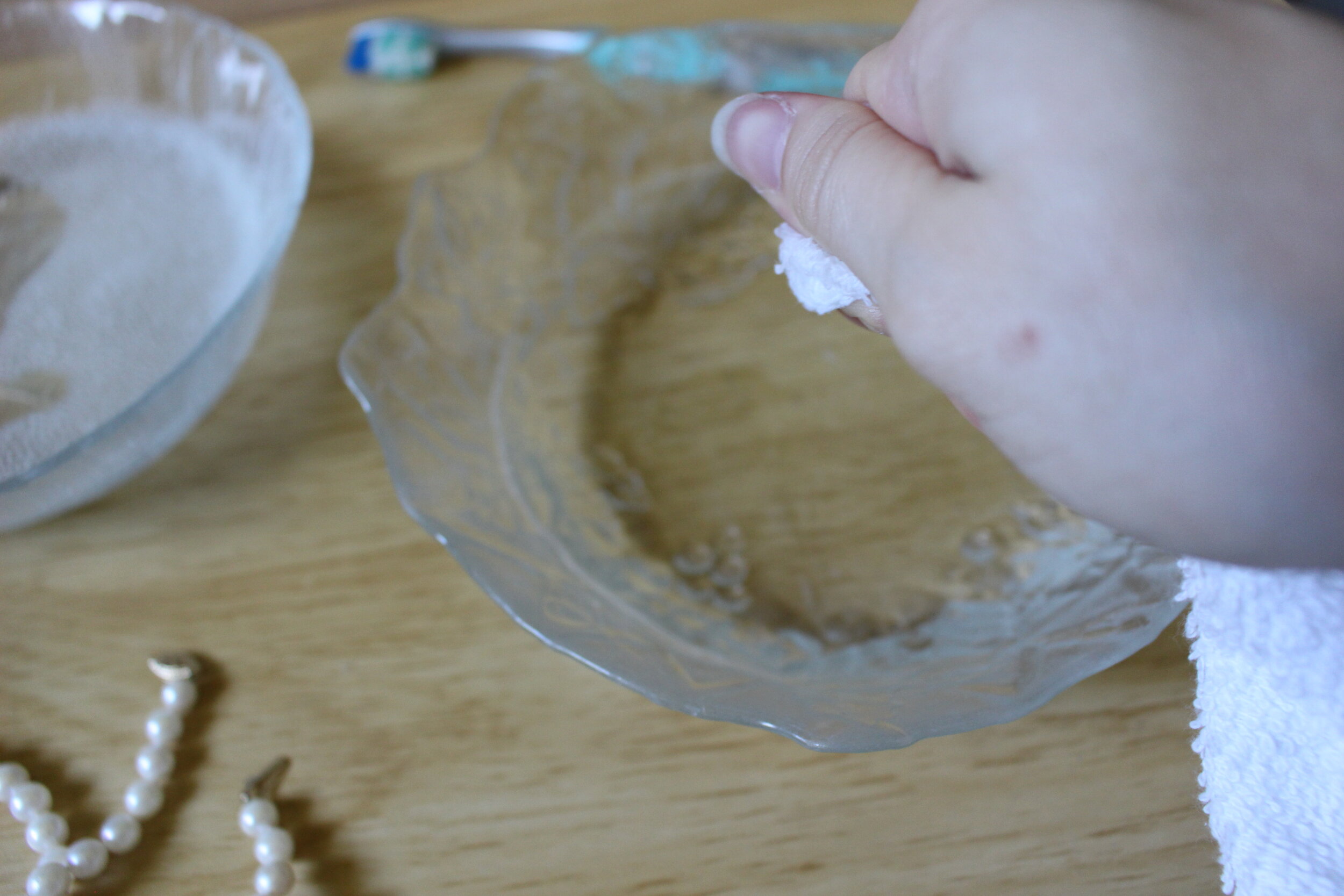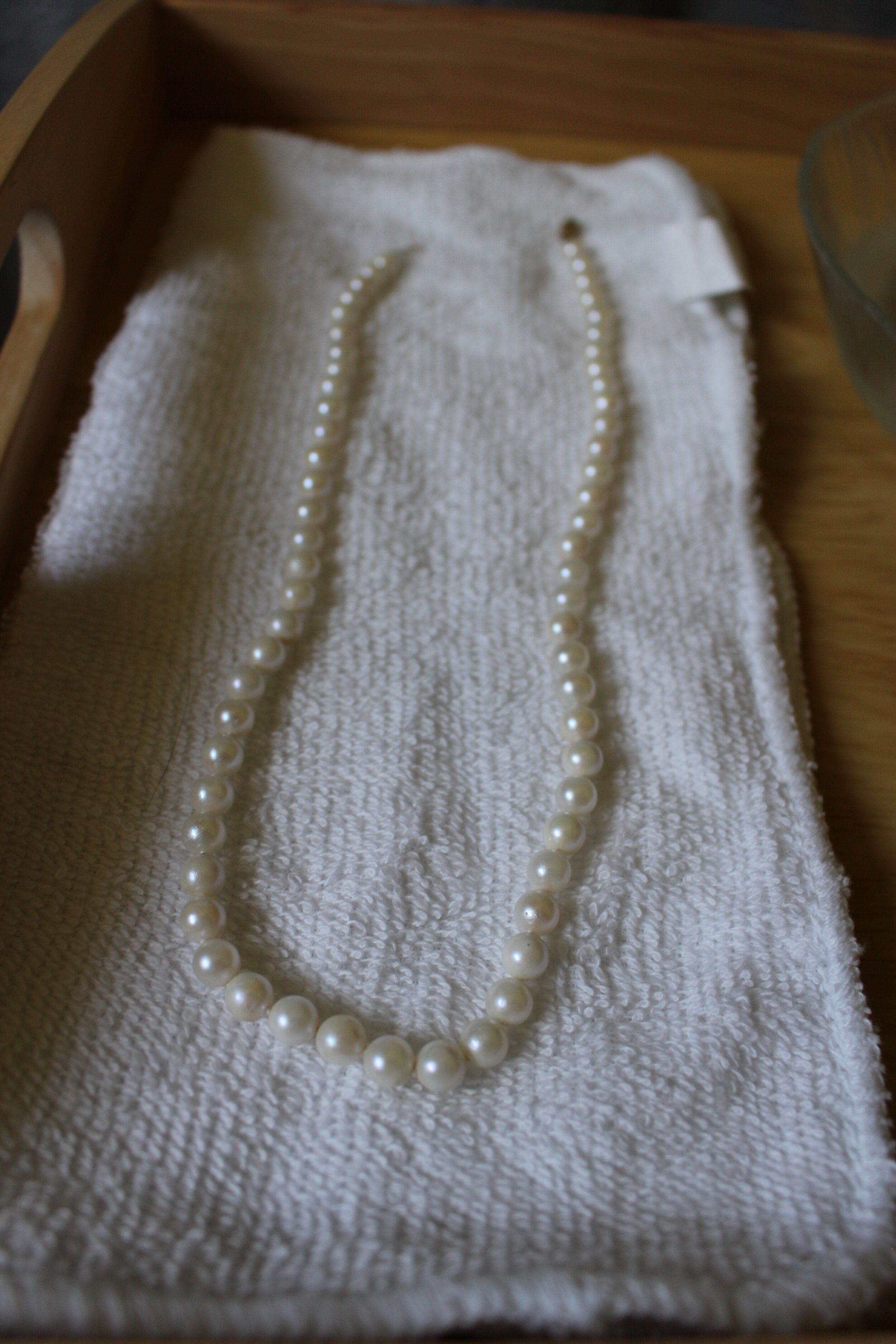
Jewelry Care & Cleaning
General Care
With some regular attention and thoughtful care your jewelry can last a lifetime.
Read on to learn some helpful tips that can help you keep your heirlooms in optimal condition.
If at all possible pieces should be stored individually, so that stones cannot rub against each-other.
Necklaces should be hung if possible to avoid pesky tangles that can easily damage chains. It is also a bad idea to wear necklaces and bracelets to bed as they can easily get snagged and break. Rings can also catch and scratch on things, so it is a good rule of thumb to take as much jewelry off as possible each night.
Never wear jewelry in the pool! Chlorine can easily damage your jewelry, as can other common chemicals like hairspray and perfume.
Stow your jewelry safely while you do the housework as many household cleaners not only have bleach, but also ammonia. Chlorine will cause gold to pit and begin to break down.
Many gems are susceptible to fracturing when they undergo extreme temperature change (thermal shock) - even diamonds. Many gems, especially organic ones like jet and amber can fade or change color with prolonged exposure to light/heat. Even the steam and heat from boiling water on the stove may be too much for certain stones.
Cleaning
Most jewelry can be easily cleaned with a soft brush, a soft towel, mild dish soap, and a bowl or glass filled with clean water. Simply use the brush to gently clean the jewelry with the soap and then dunk it in the clean water to rinse. If there is a build up of grime, oil, dirt, etc. let the jewelry soak in the soap solution for a little while. Dust and oils can easily build up behind stones, so make sure that you clean the undersides of the stones if you can access them. Don’t rinse your jewelry directly in the sink to avoid accidentally dropping your piece or loose stones down the drain.
Often just a quick swish in a bowl of clean water is enough to get your jewelry sparkling again. Never use toothpaste to clean your jewelry.
When in doubt, use the most gentle method possible to clean your jewelry.
Many stones are sensitive to heat, so heated ultrasonic machines and steam should be avoided for:
Fluorite
Malachite
Opal,
Others
These types of cleaners should also be avoided for jewelry where gems are set with only a few prongs, are tension set, or where gems actively touch each other.
Some gems should also never be scrubbed in any way, as they are soft and easily scratched. Some examples are
Amber
Mystic Topaz (the coating can be abraded off)
Moonstone and other Feldspar
Opal
Turquoise
Cleaning Diamond Jewelry
Cleaning Gold jewelry with Other Gemstones
Cleaning Silver Jewelry
Cleaning Pearls
Pearls are going to need more careful attention and maintenance than most other gems.
Pearls should never be scrubbed or have anything abrasive used on them - new makeup brushes are good for cleaning pearls.
Strands of pearls that are very dirty should be restrung with fresh silk cord, allowing each of the pearls to be gently cleaned without compromising the integrity of the strand.
Hardness & Toughness
All stones, even diamonds, can be chipped and broken. Tall settings, while beautiful, unfortunately position your gemstone so that it is more likely to get banged into things. Stones set with only a few prongs, especially marquise cut stones, are also more susceptible to chipping or shattering.
Hardness
Many people are familiar with the Mohs scale, which rates meterials on their hardness from 1 to 10. The ratings on this scale were developed with the 10 stones below and it is their relative hardness that the system is based on.
Talc
Gypsum
Calcite
Fluorite
Apatite
Feldspar
Quartz
Topaz
Corundum (Ruby/Sapphire)
Diamond
Diamonds are a 10 on this scale and are exceptionally resistant to abrasion. Talc is a 1 on the Mohs scale and can be easily scratched with a fingernail. On this scale a gem can scratch anything with the same number and below.
Toughness
Toughness is another indication of gem durability. Toughness is the stone’s ability to resist breaking/chipping. Diamonds, while exceptionally hard are actually quite easy to fracture if hit just right. The points on a gemstone are always going to be more susceptible to breakage, and the gem’s toughness should be taken into consideration when choosing a setting. Something like tanzanite is going to need a more secure setting than jadeite.
Care for common gemstones:
Alexandrite (Mohs 8.5)
Alexandrite is an ideal stone for daily wear with good hardness, great toughness, and no cleavage. It will do alright in steam and ultrasonic cleaning.
Amber (Mohs 2.0 to 2.5 )
Amber is very soft, and therefore needs more care and attention than something like a sapphire. The only safe way to clean amber is with a very soft cloth and soapy water. Amber should be stored by itself away from heat and light.
Amethyst (Mohs 7)
Store your amethyst jewelry so that it does not come into contact with harder gems like rubies/sapphires & diamonds. Amethysts should not be cleaned with any methods where high heat is used. Excessive heat will permanently change the color of the stone and heat treated stones are more brittle. It should also not be left out in the sun for prolonged periods as this can also change the color over time. Steam should also be avoided when cleaning this stone.
Aquamarine (Mohs 7.5–8)
As long as there are no fractures, filled or otherwise, aquamarine can be cleaned with steam or an ultrasonic cleaner. They are fairly hard and tough, so they do not require much special care.
Citrine (Mohs 7)
Both relatively hard and tough, citrine is not one that you have to worry much about for daily wear. Like its cousin amethyst, high heat should be avoided.
Corundum - Ruby & Sapphire (Mohs 9)
Rubies and sapphires require the same care. These stones have great hardness, excellent toughness, and no cleavage. They are well suited for daily wear in everything from rings to bracelets. It is best to avoid any cleaning methods that use high heat as this can damage stones that have been treated in any way. You should always try and determine if your ruby or sapphire has been treated when purchasing.
Diamond (Mohs 10)
While diamonds are the hardest of all gems, they are not invincible. Diamonds can be scratched by other diamonds, and they will break if they are struck from the right angle. Diamonds that have been filled or have many inclusions should be kept out of ultrasonic cleaners and away from heat. Something to keep in mind as well is how your diamond has been set. If your jewelry has stones that are set so they are touching (channel set for example) it should not be placed in an ultrasonic cleaner.
To learn more about diamond quality factors, check out our guide!
Emerald (Mohs 7.5-8)
Emeralds are beautiful stones that need some mindful care, but with the right attention they will do just fine being worn for many years in all manner of jewelry.
Heat is not a friend to emeralds and should be avoided, as should any vibrating cleaner.
Emeralds are not as tough as rubies and sapphires, so they are more susceptible to chipping and breaking. Emeralds should be kept away from chemicals and pressure changes.
Garnet (Mohs 6.5-7.5)
Steam cleaning is not recommended for garnets, and ultrasonic cleaners are generally safe as long as the gem has no fractures or has not been fracture filled. Cleaning with a gentle soap and a soft cloth is an effective and safe cleaning method.
Jade (Mohs 6.5 to 7 and 6.0 to 6.5)
Jade is actually two separate minerals that are lumped under one name. Jadeite, the harder of the two scatters light beautifully, and nephrite chimes musically when struck. Jade is very tough but not particularly hard, so it should never be scrubbed. Cleaning with a soft cloth and warm water is ideal.
Moonstone & Other Feldspar (Mohs 6)
While it is towards the middle on the hardness scale, moonstone is not a tough stone. Care should be taken with your moonstones so as to prevent abrasions and fractures. High heat can cause moonstone to break so steam and ultrasonic cleaners should be avoided. These stones should never be scrubbed.
Opal (Mohs 5-6.5)
Opal is another of the softer gems and requires some special care. They should only be cleaned with warm water and soft cloth. They should be kept away from high heat. Opals can also dry out if kept in an excessively dry environment for a long period. Opal doublets and triplets have adhesive used in their construction and prolonged exposure to water can cause the adhesive to weaken.
Pearl (Mohs 2.5-3)
Pearls are especially sensitive to chemicals, heat, and abrasion. They should never be cleaned in an ultrasonic machine. They should not be stored in plastic as the chemicals can seep into the surface of the pearls. Hairspray and perfume should be put on before you put pearls on.
Pearls should only be cleaned with very soft brushes and towels. Strung pearls should be placed flat on a towel until they are completely dry. The silk thread that is used to string pearls loves to attract perfumes and oils, so pearls that are frequently worn should be restrung every year or so. They should be put on last and taken off first. A good practice is to give your pearl strands a quick, gentle swipe with a damp cloth after they are worn.
Peridot (Mohs 6.5-7)
Softer than most of the other popular gems, peridot will require a little more special care. It will be more prone to scratching and should not be stored with anything higher on the Mohs scale. Never use steam or an ultrasonic cleaner on a peridot. These stones should only be cleaned with a soft cloth or brush and warm water.
Tanzanite (Mohs 6-7)
These stones are sensitive to acids and heat. Ultrasonic and steam cleaning is best avoided. They are also not excessively hard or tough stones so they are best suited to pieces like earrings and pendants, though with attention and a thoughtful setting they can work wonderfully in rings for special occasions.
Topaz (Mohs 8)
While these stones are hard, they have poor toughness so they are more susceptible to breakage. Steam and ultrasonic cleaning must be avoided for these stones. Topaz can be damaged by some chemicals, and in orange to brown stones prolonged exposure to light will sometimes cause fading. Mystic topaz is treated and requires a little bit of extra care. The coating that causes the colorful effect can be removed with abrasive cleaning or buffing wheels.
Turquoise (Mohs 5-6)
One of the softer stones, turquoise is sometimes treated to improve its hardness and sheen. High heat can cause discoloration or even fractures. Turquoise is vulnerable to acids, and should be cleaned after it is worn next to the skin as the oils in our skin and the chemicals in cosmetics can damage these stones. Turquoise should only be cleaned with warm soapy water and a gentle cloth or brush.
Tourmaline (Mohs 7-7.5)
Generally suited for everyday wear, tourmaline is fairly light resistant and sturdy. These stones should be kept away from heat, so steam and ultrasonic cleaning should be avoided.


